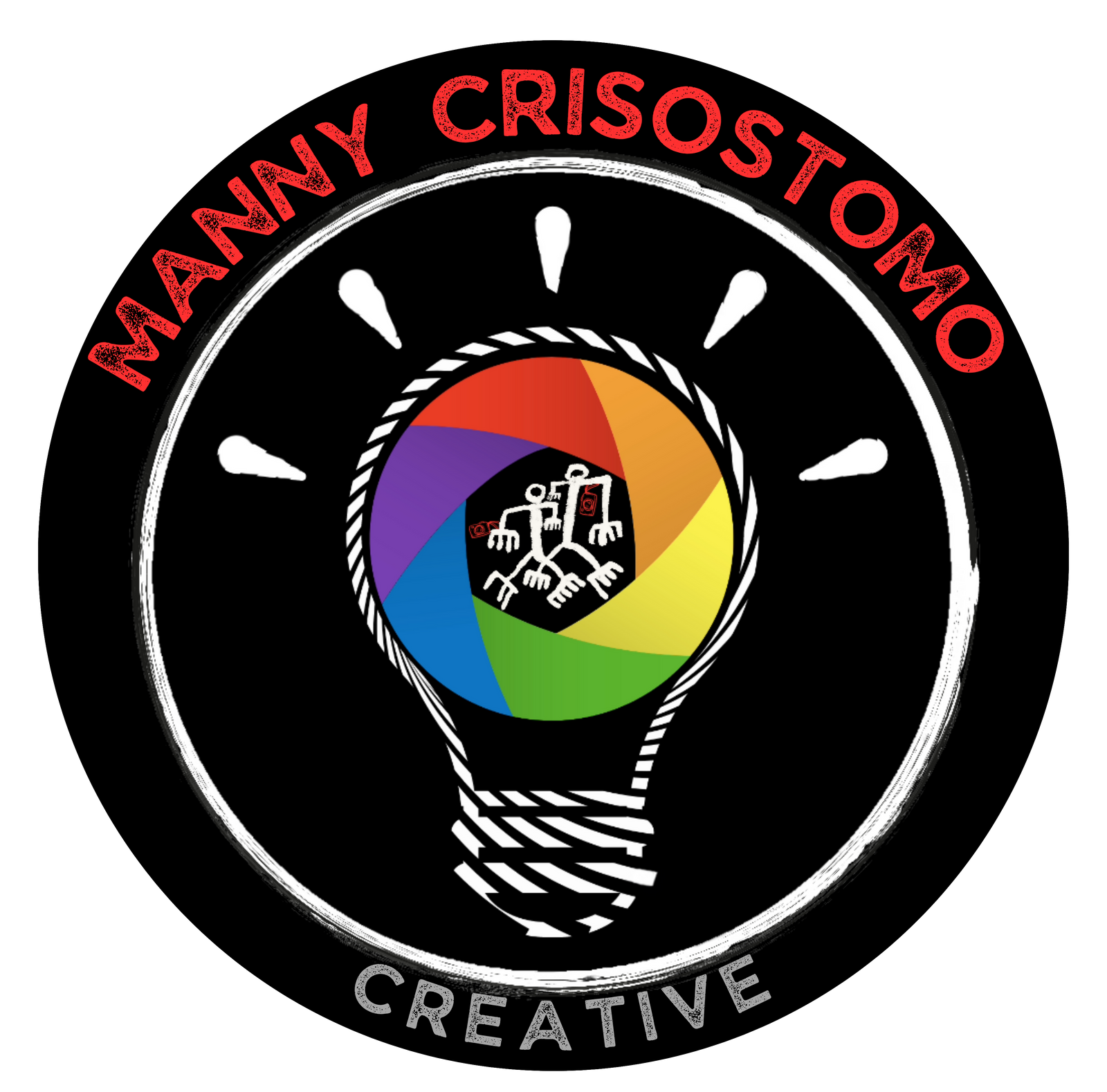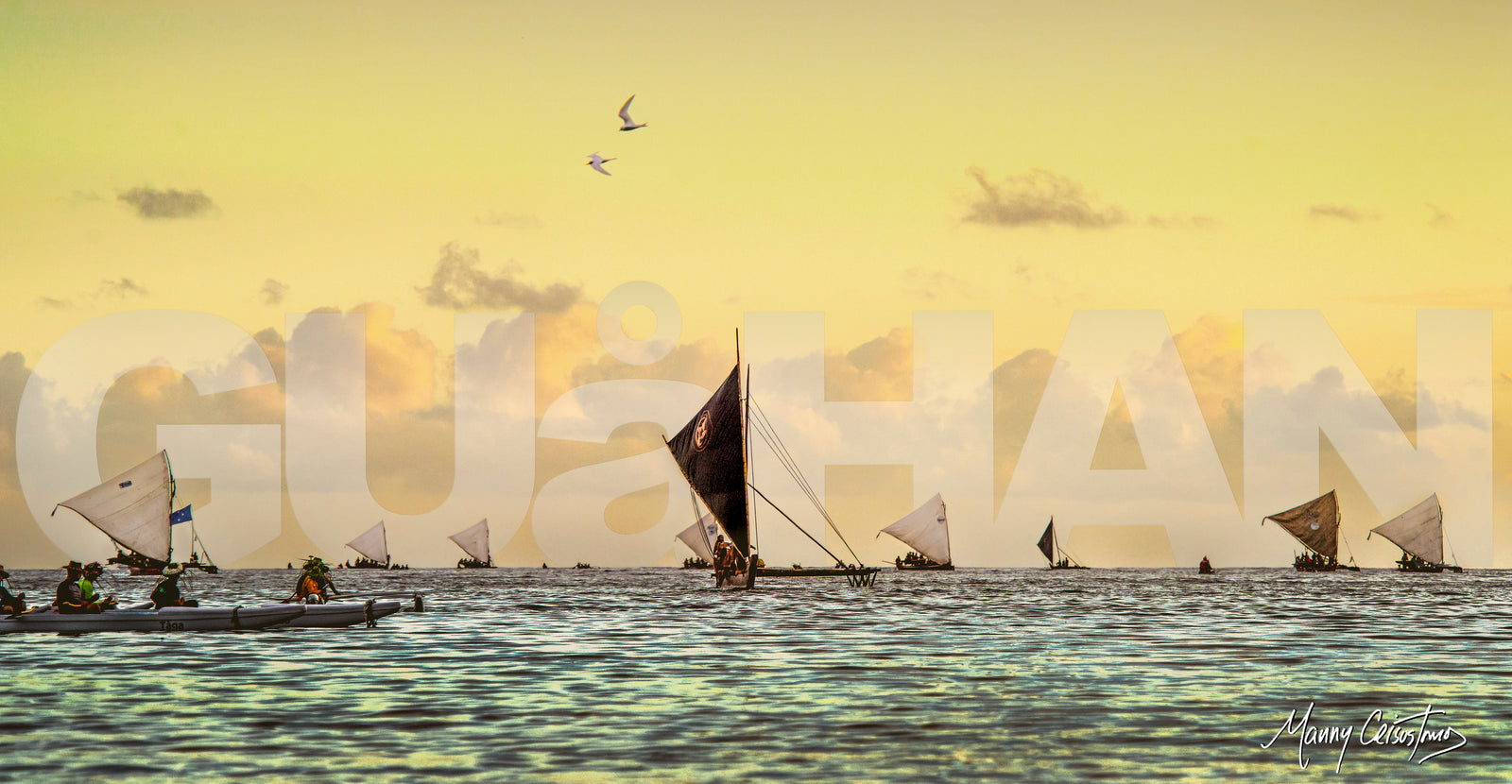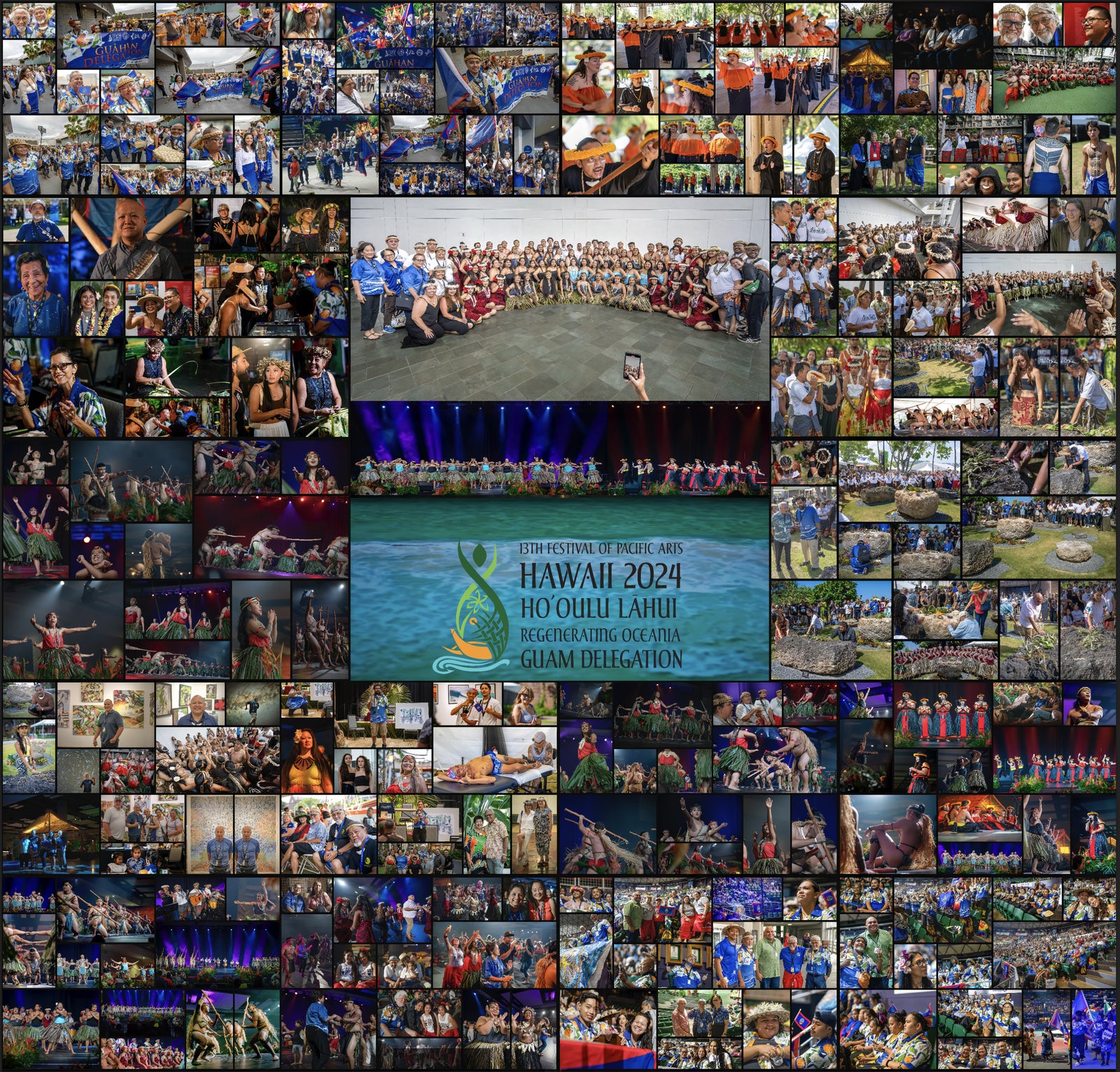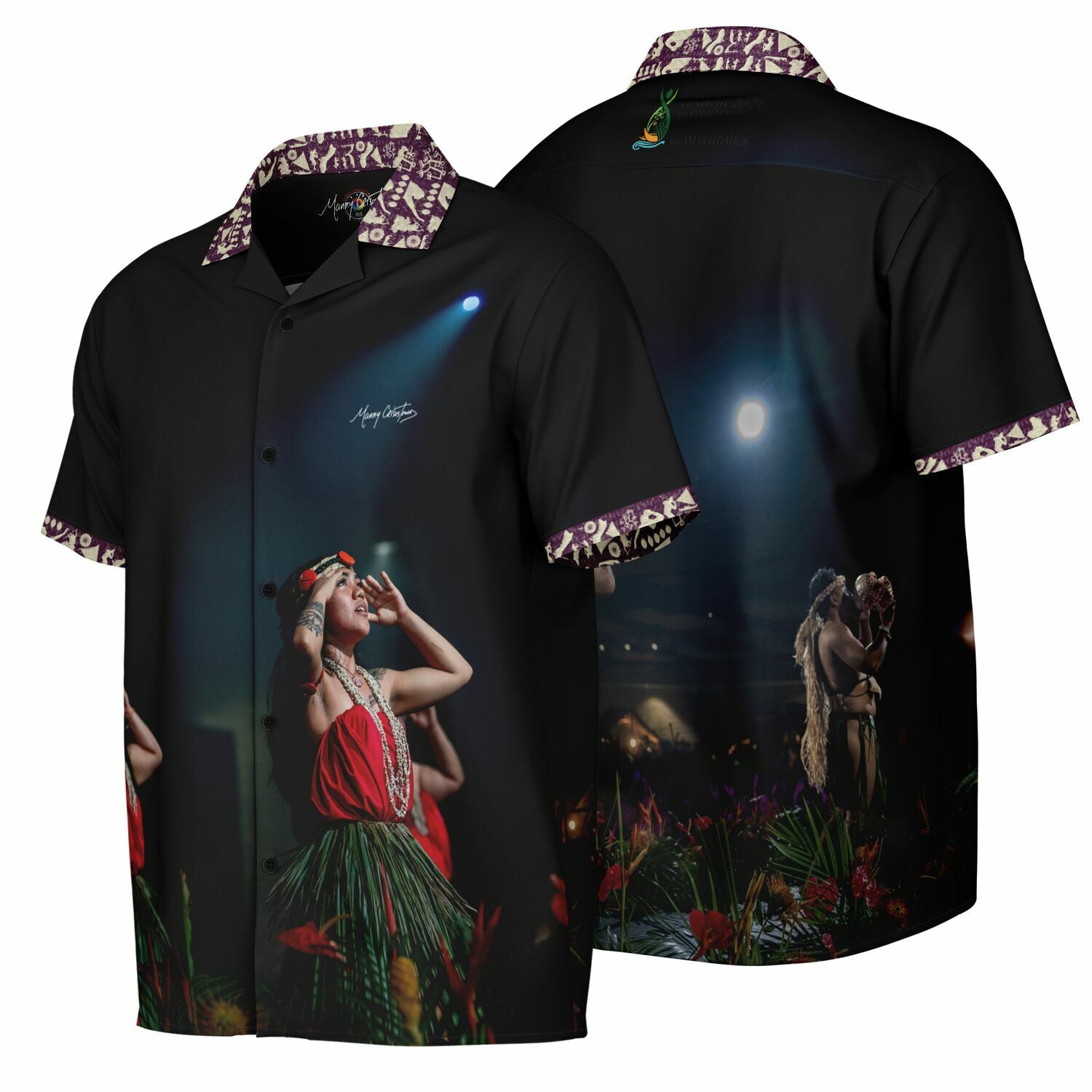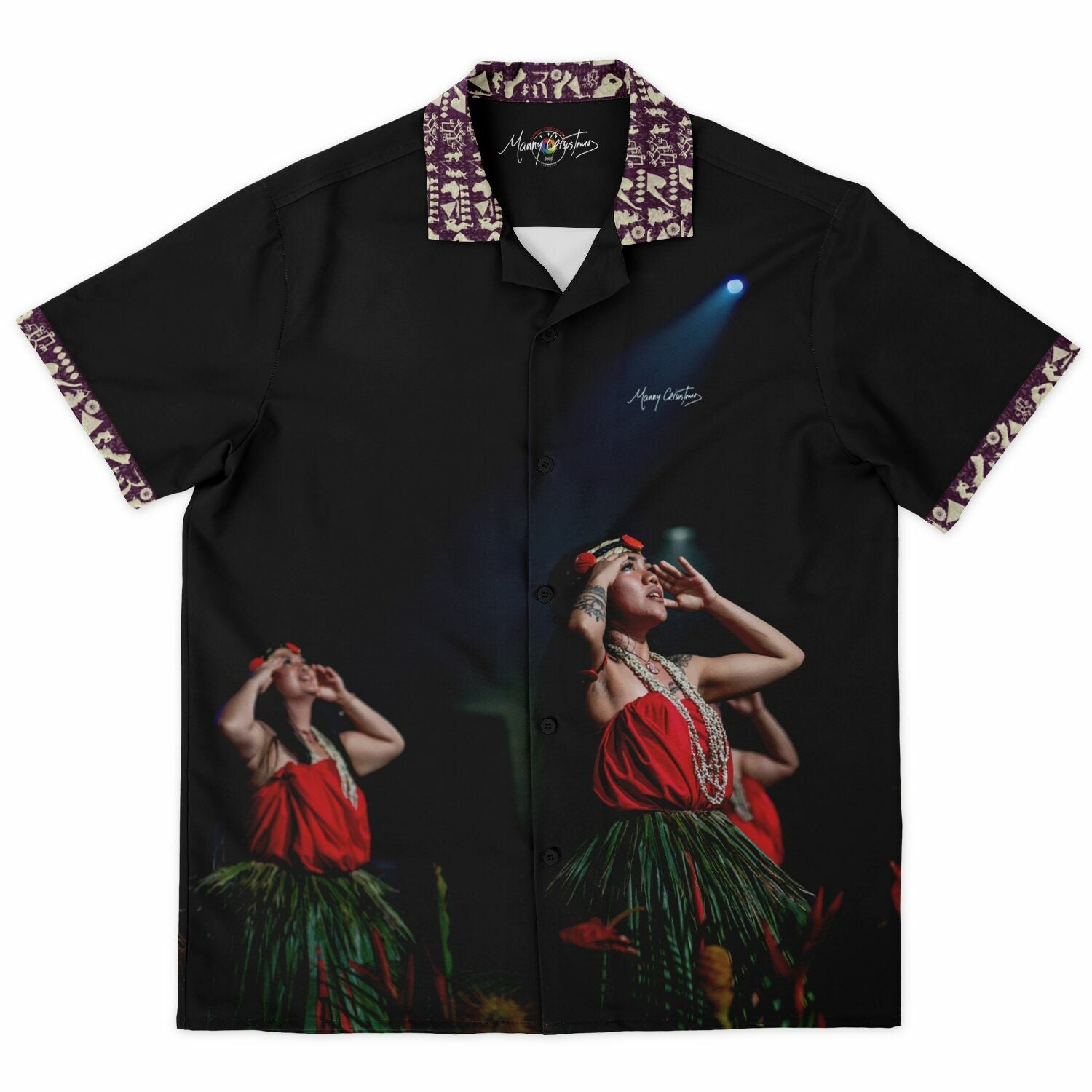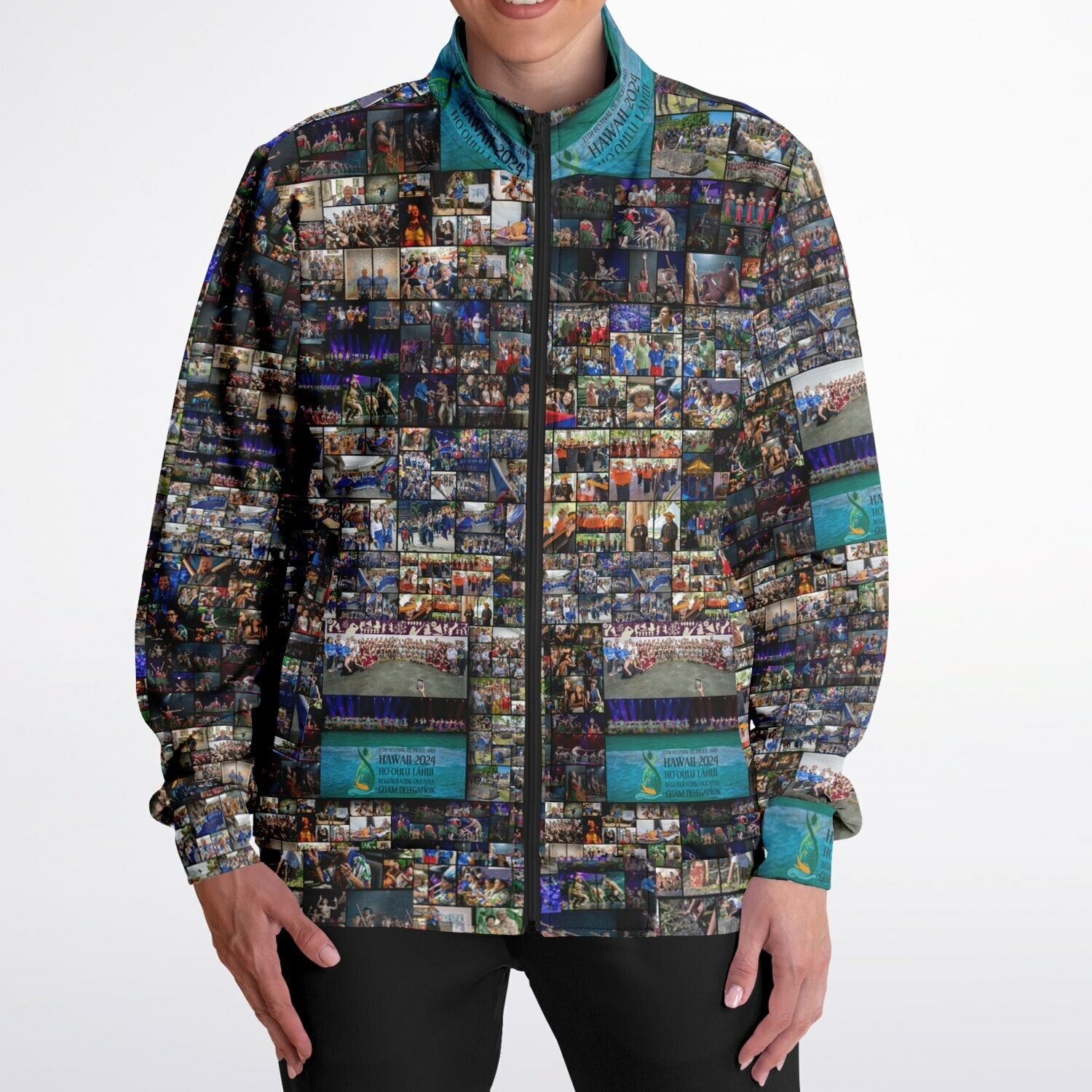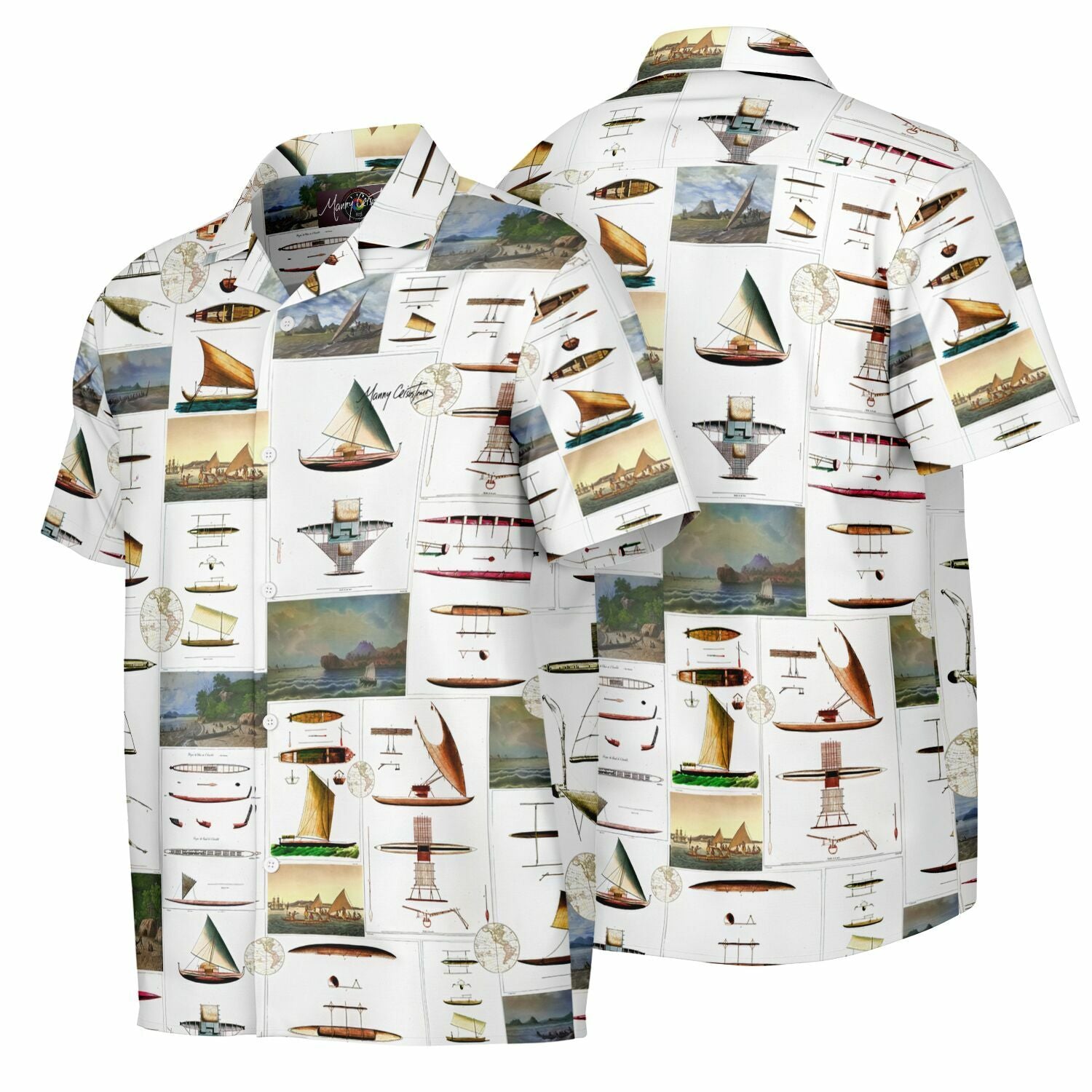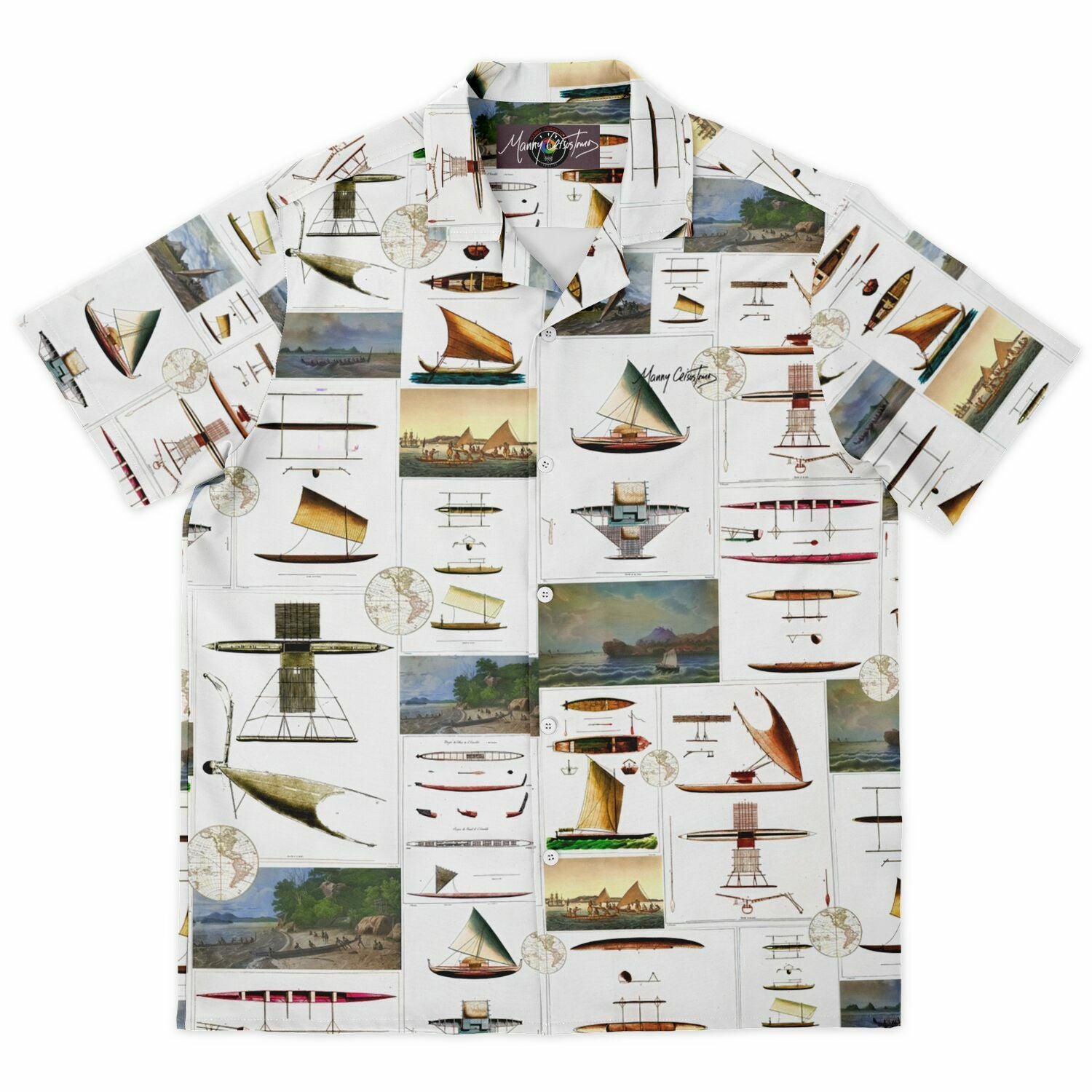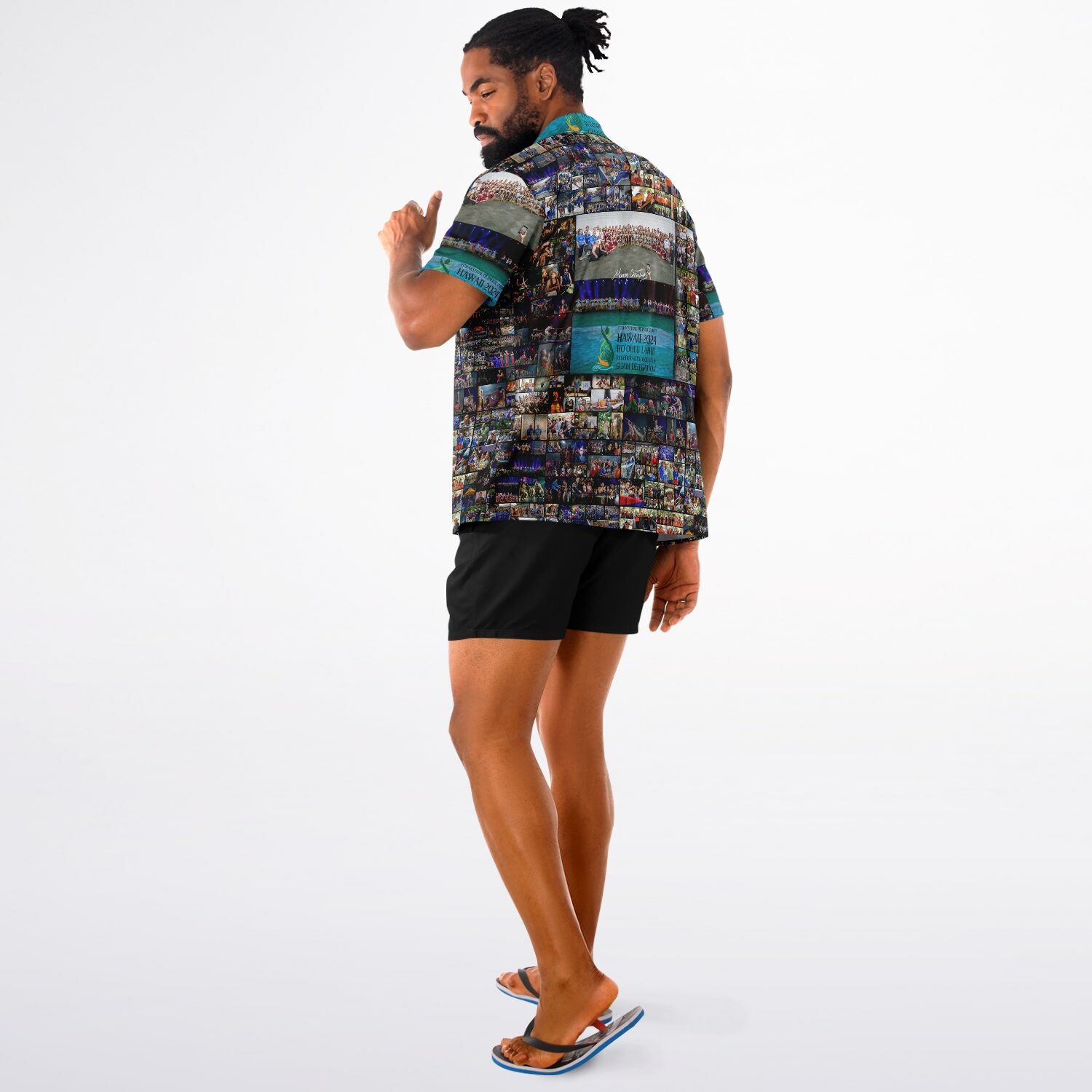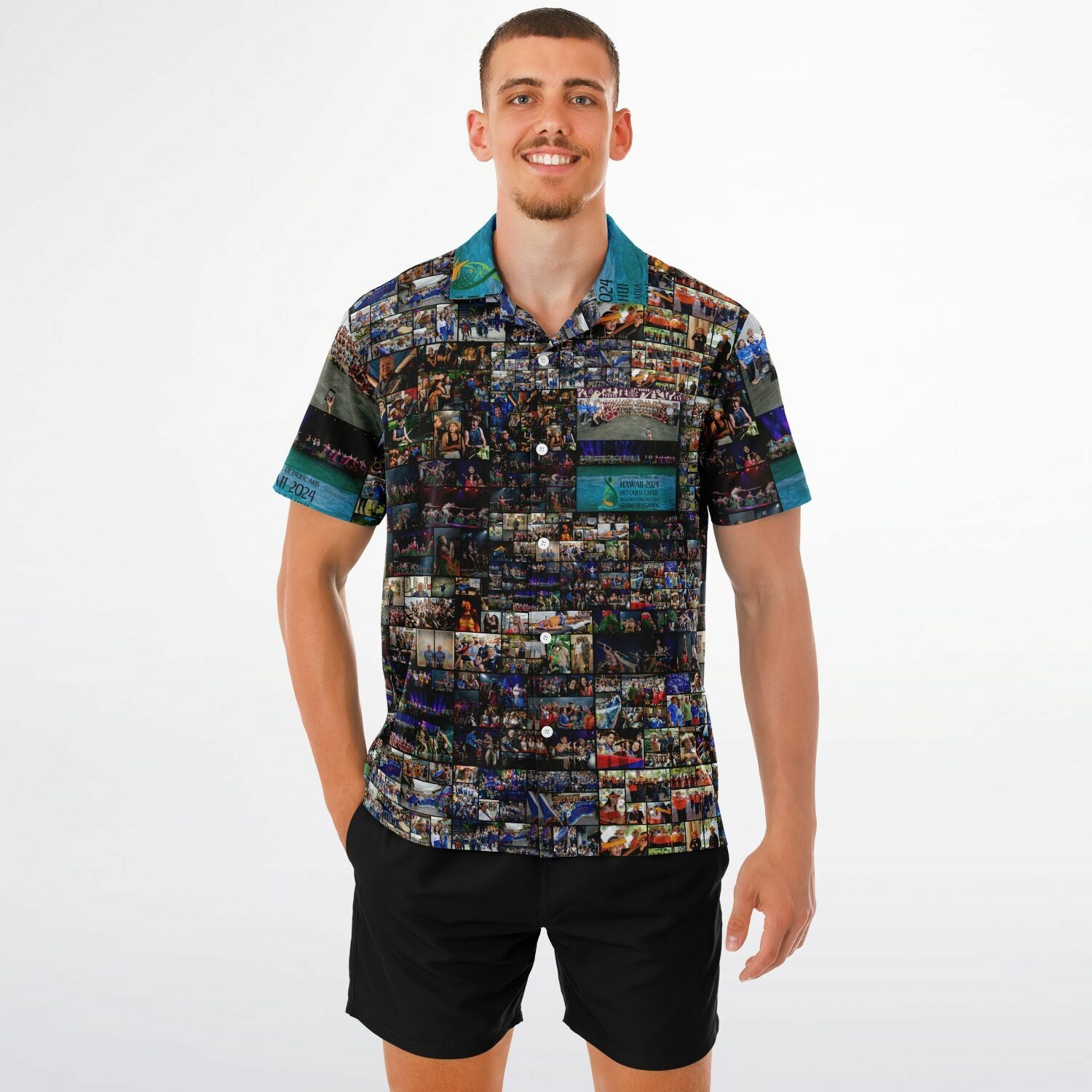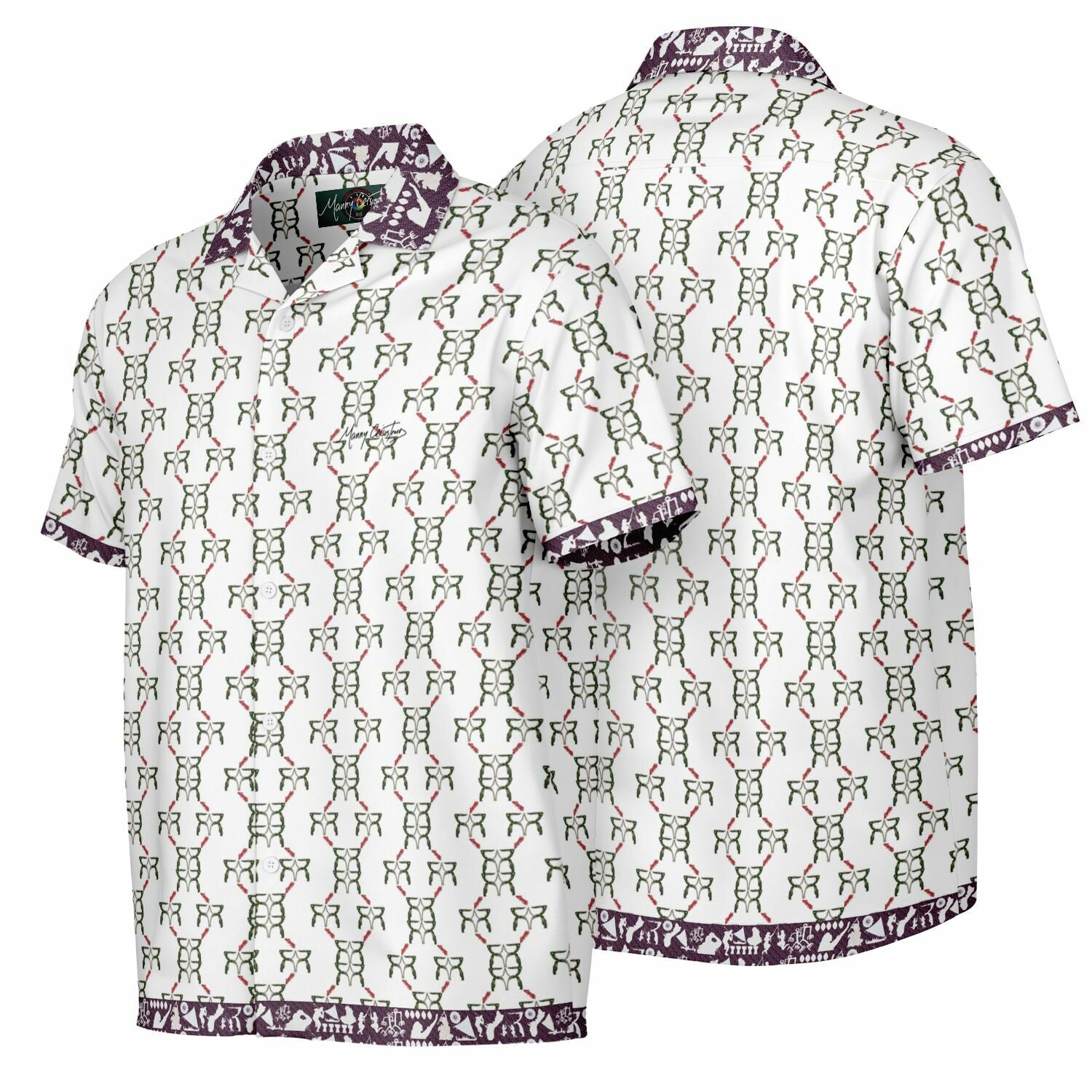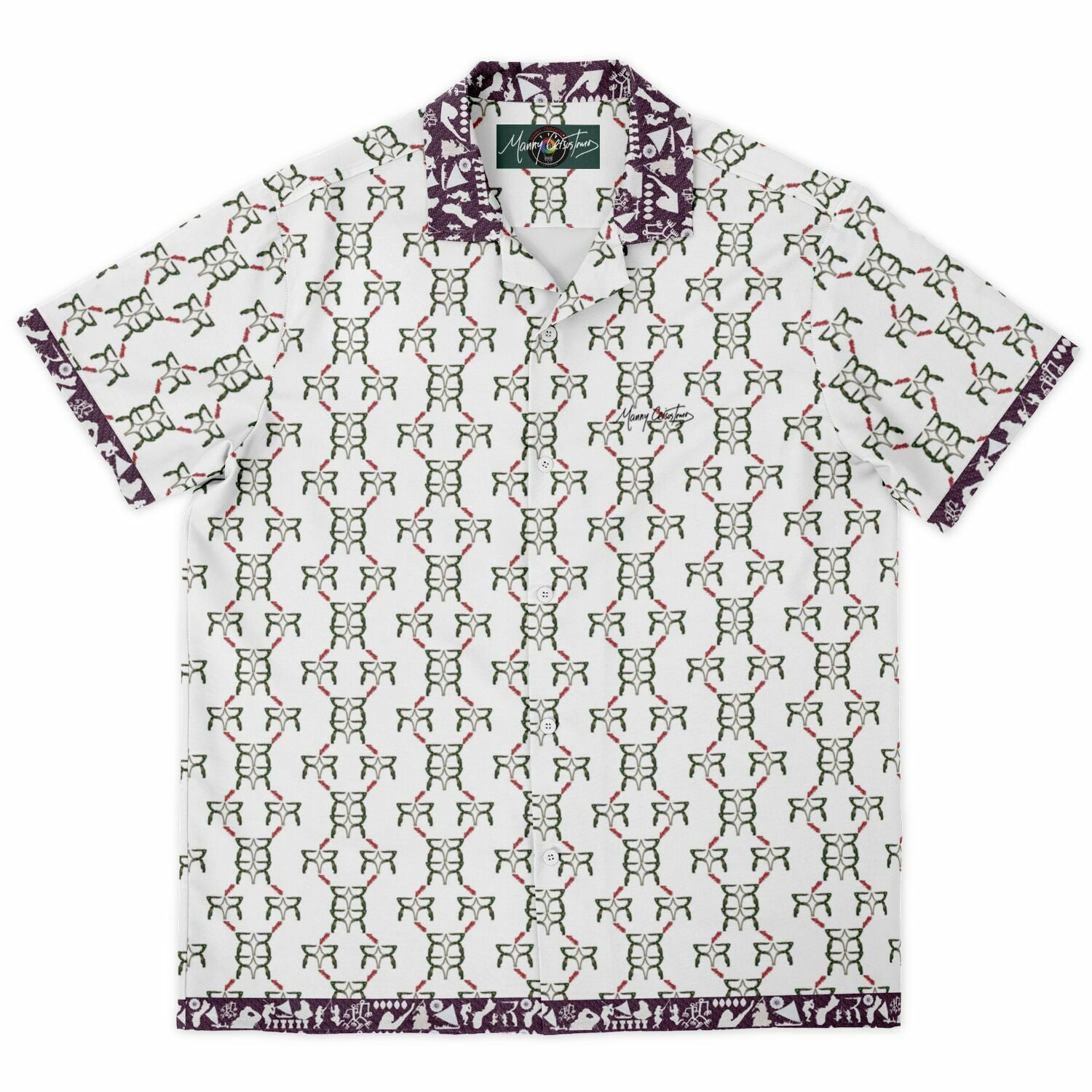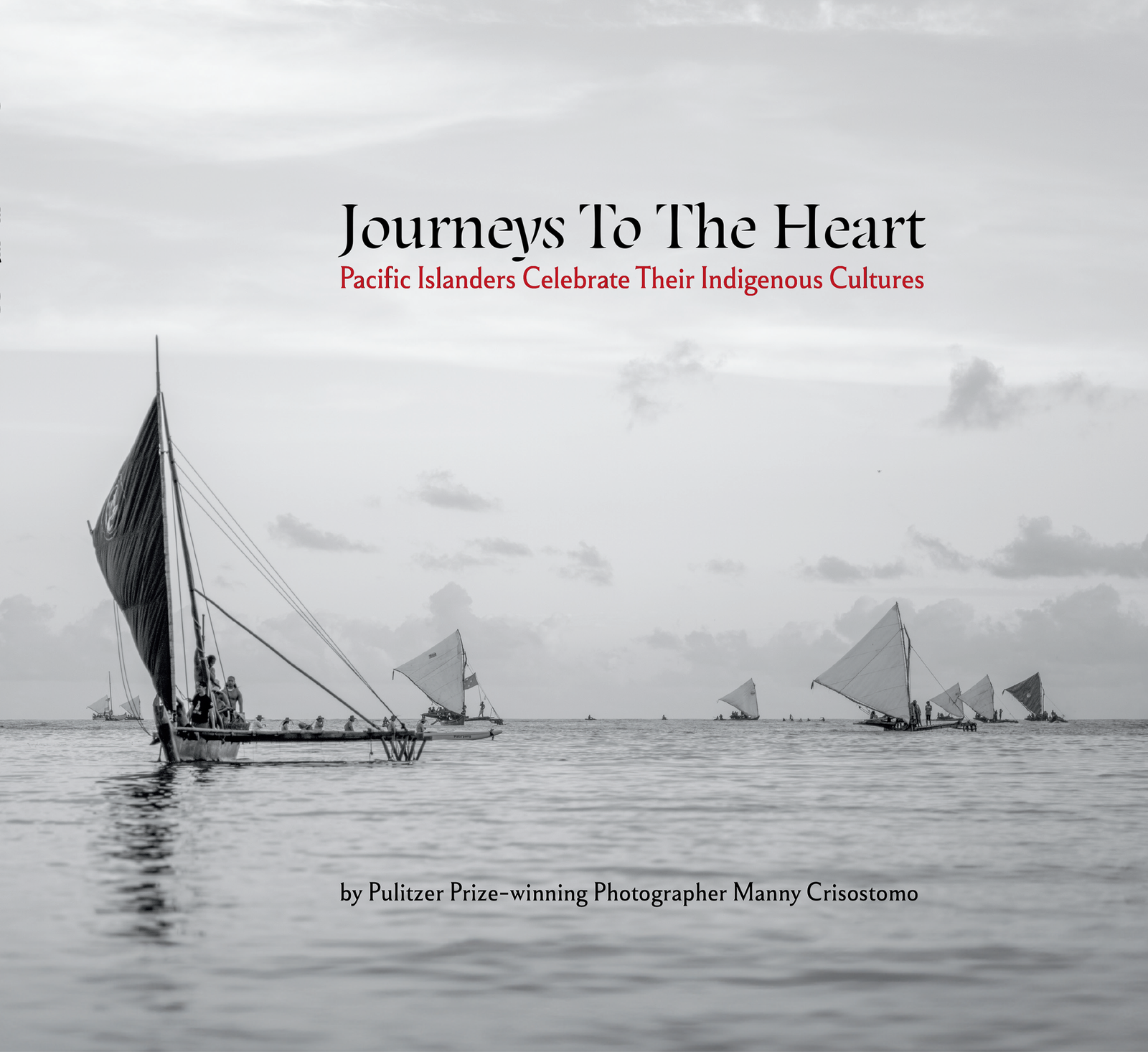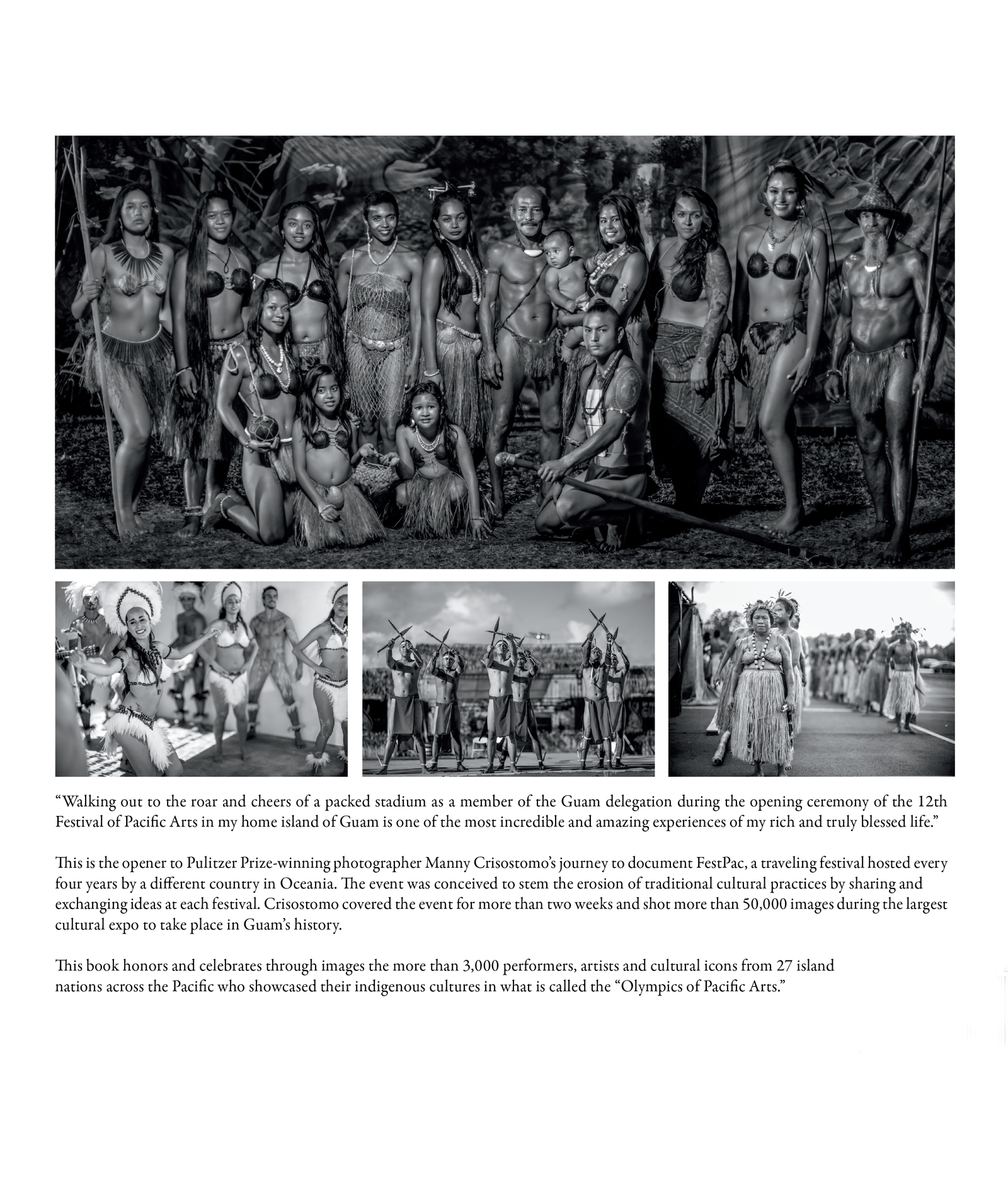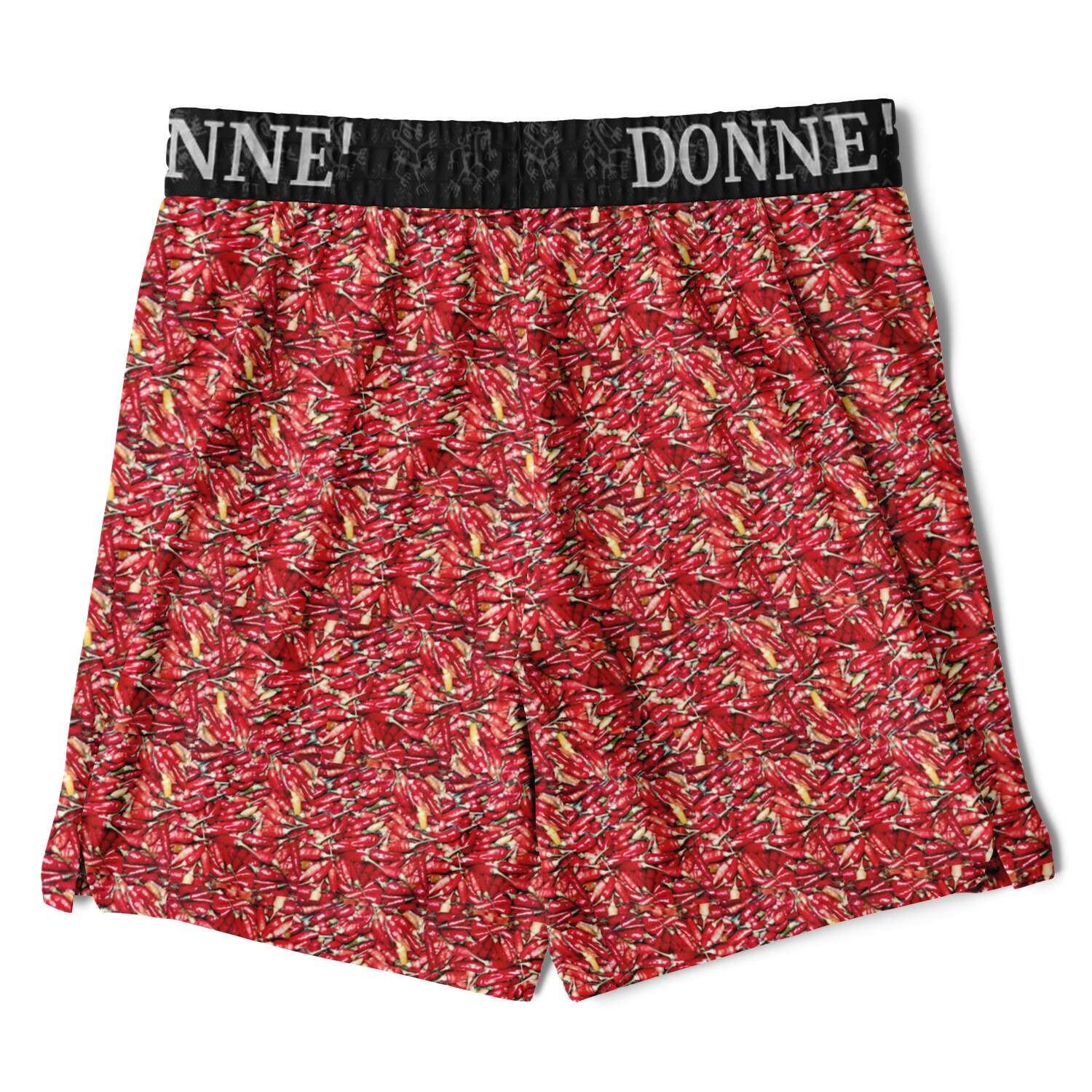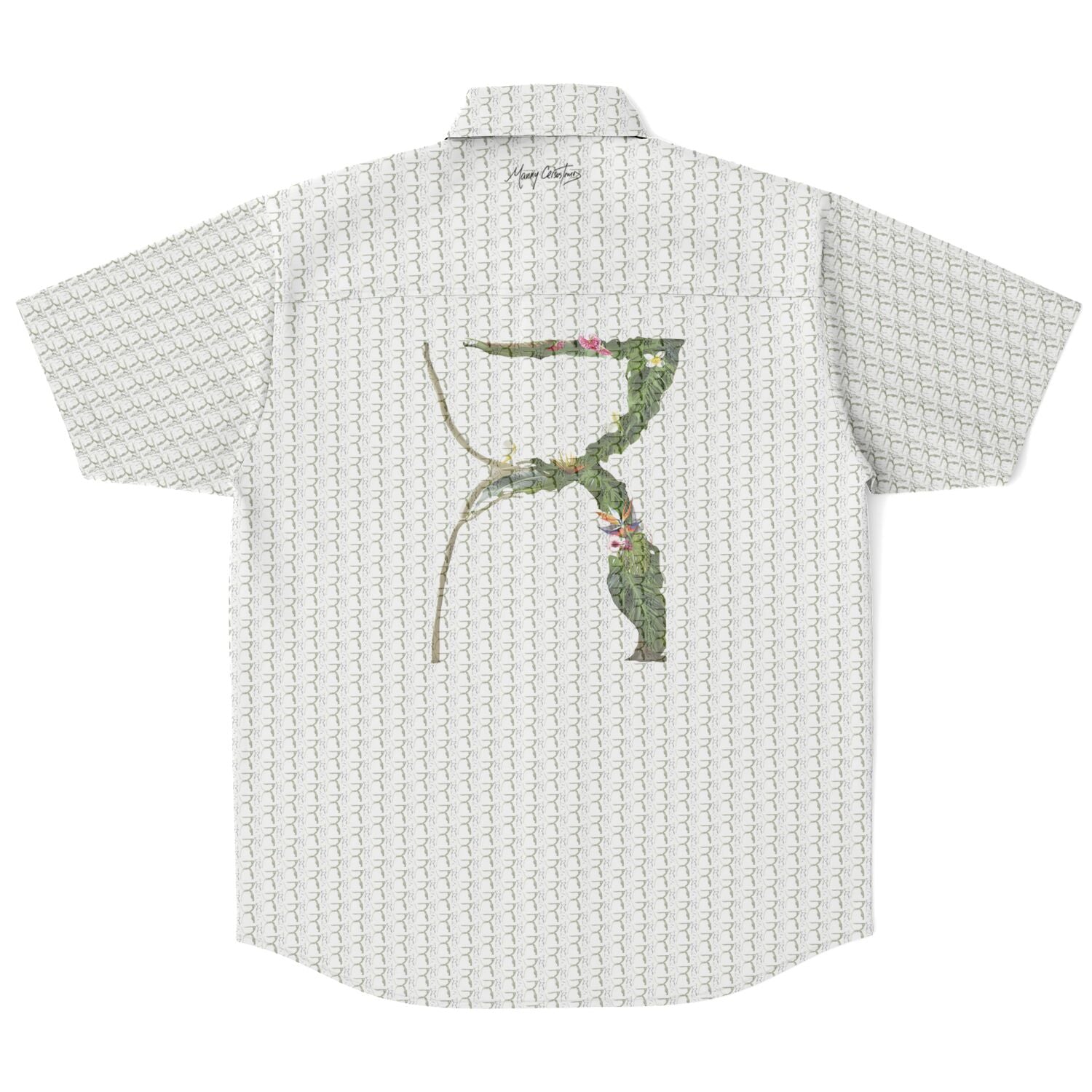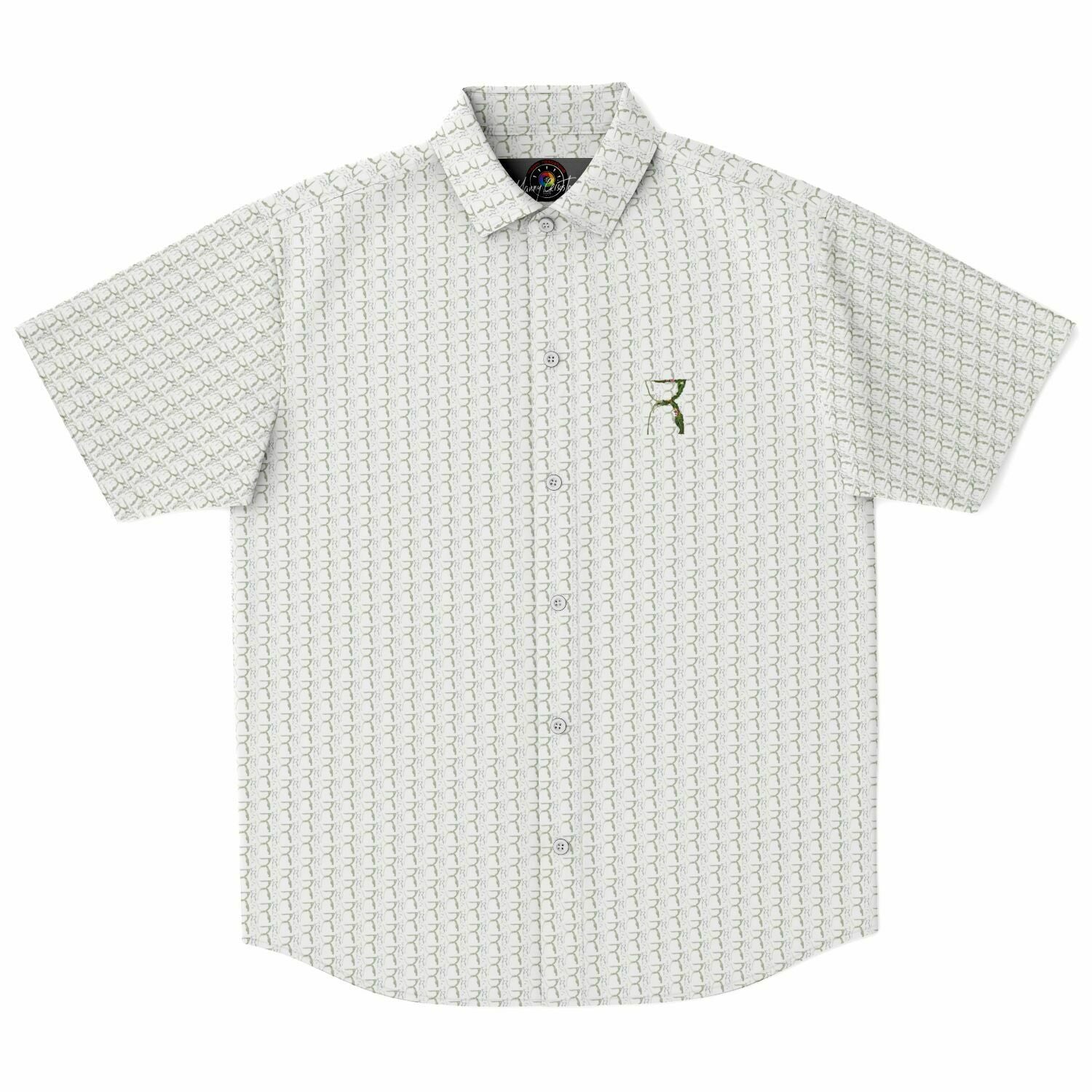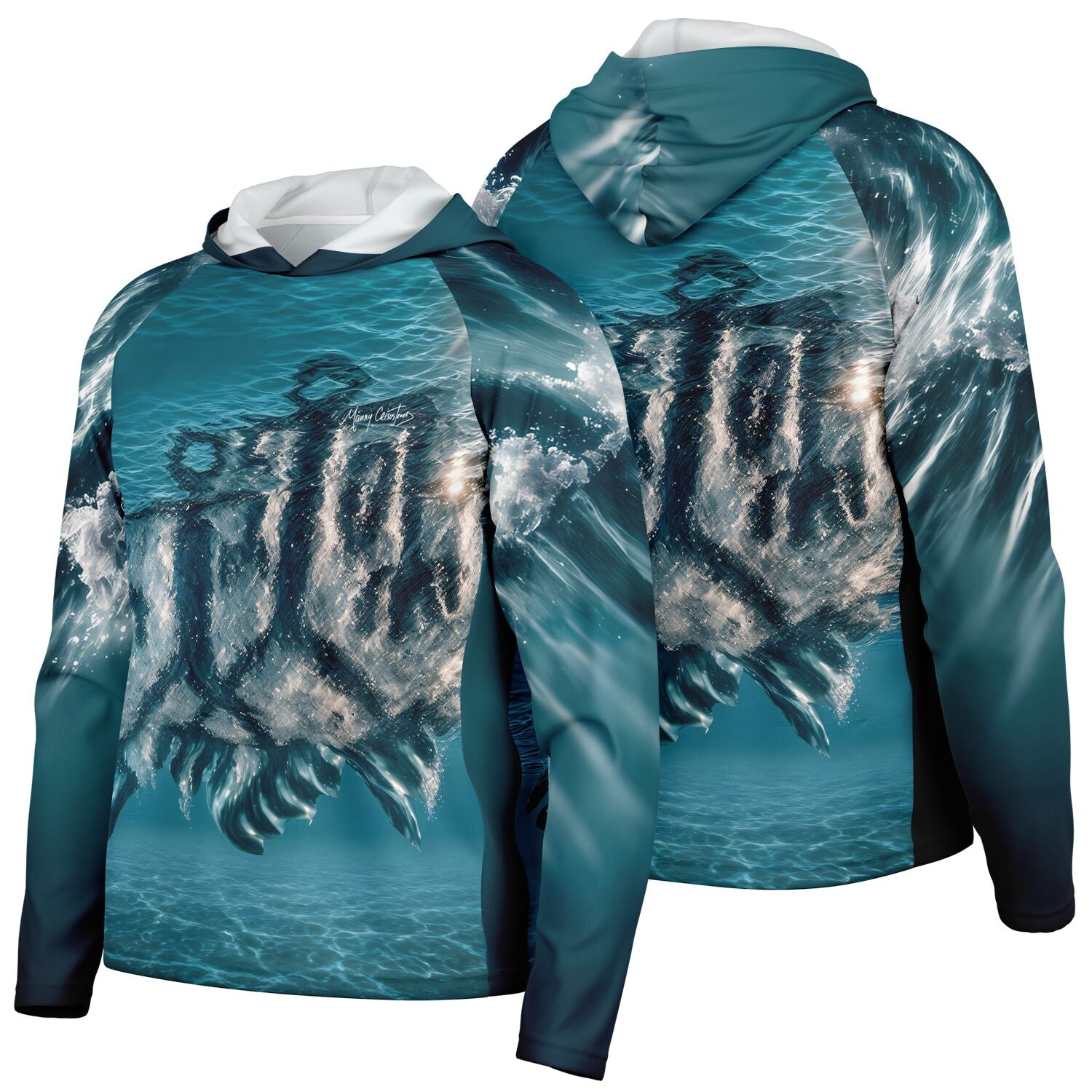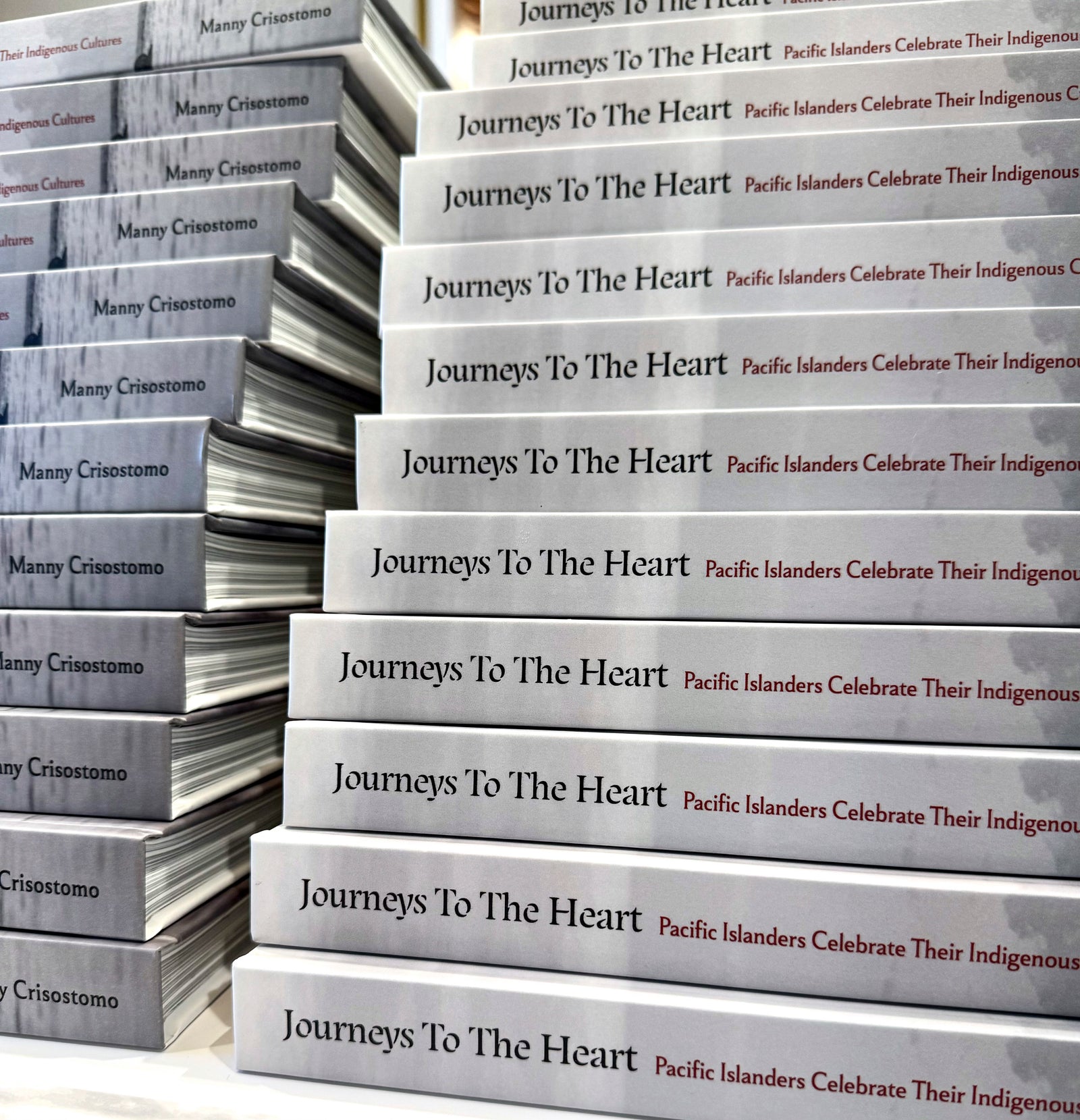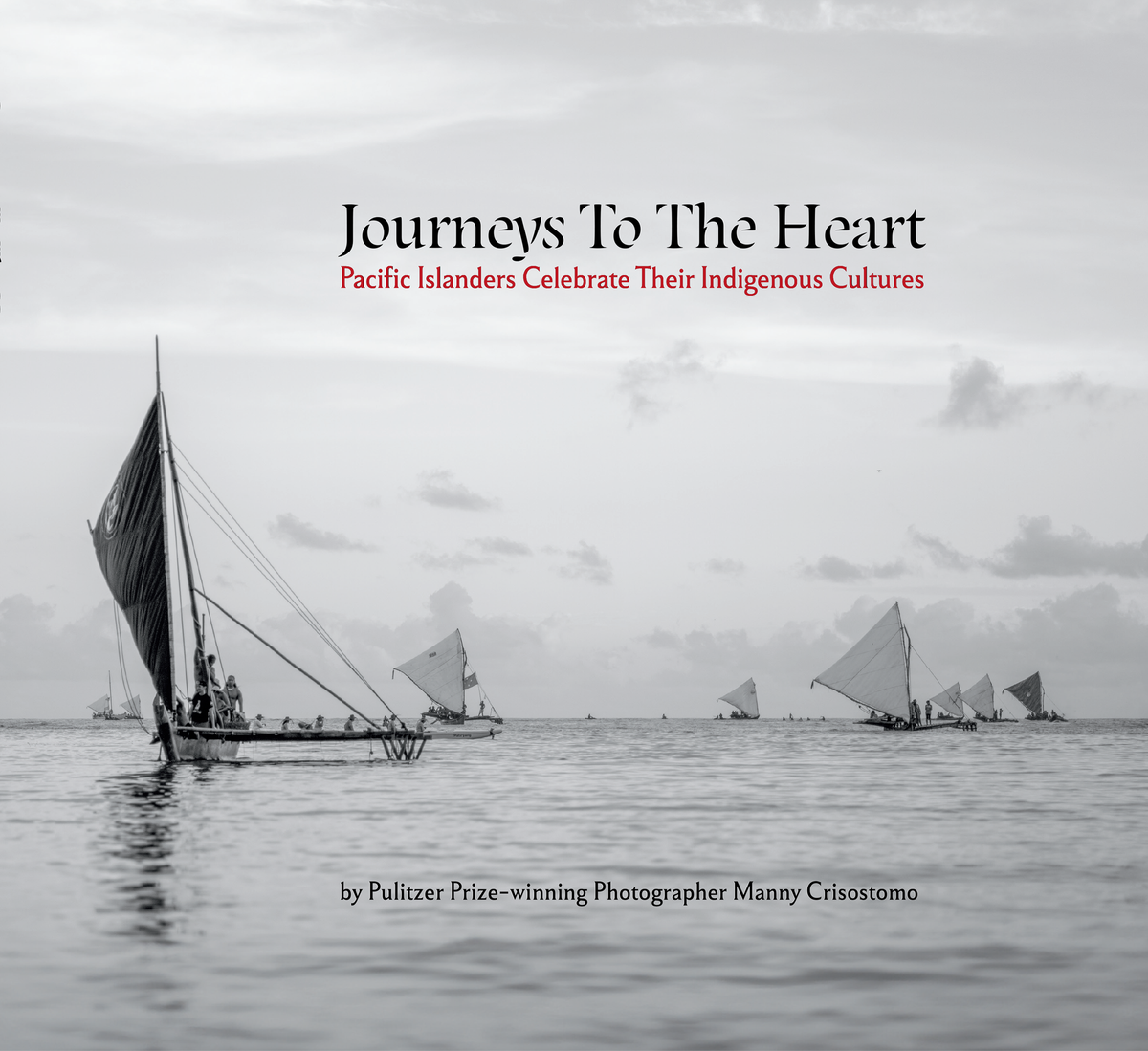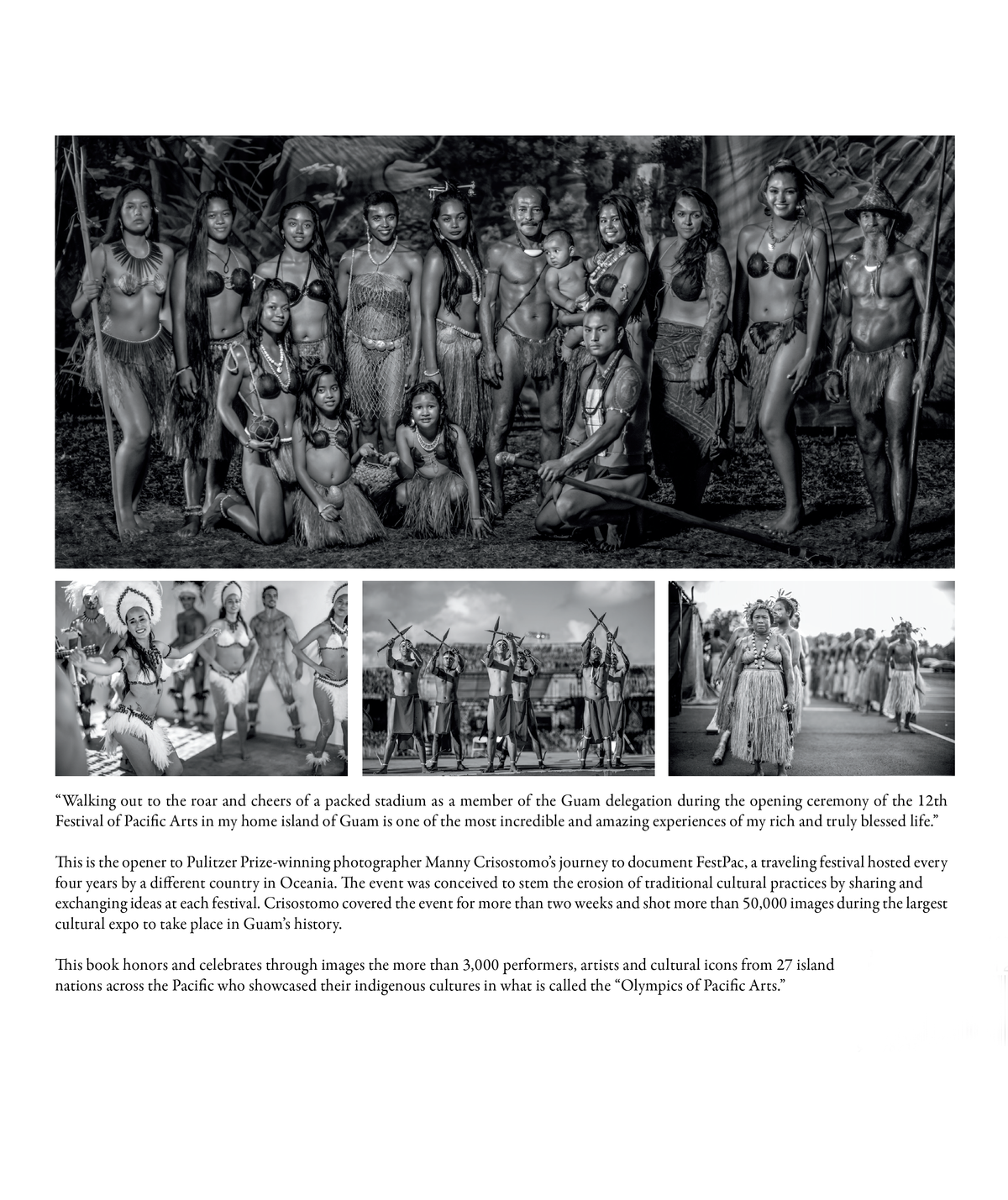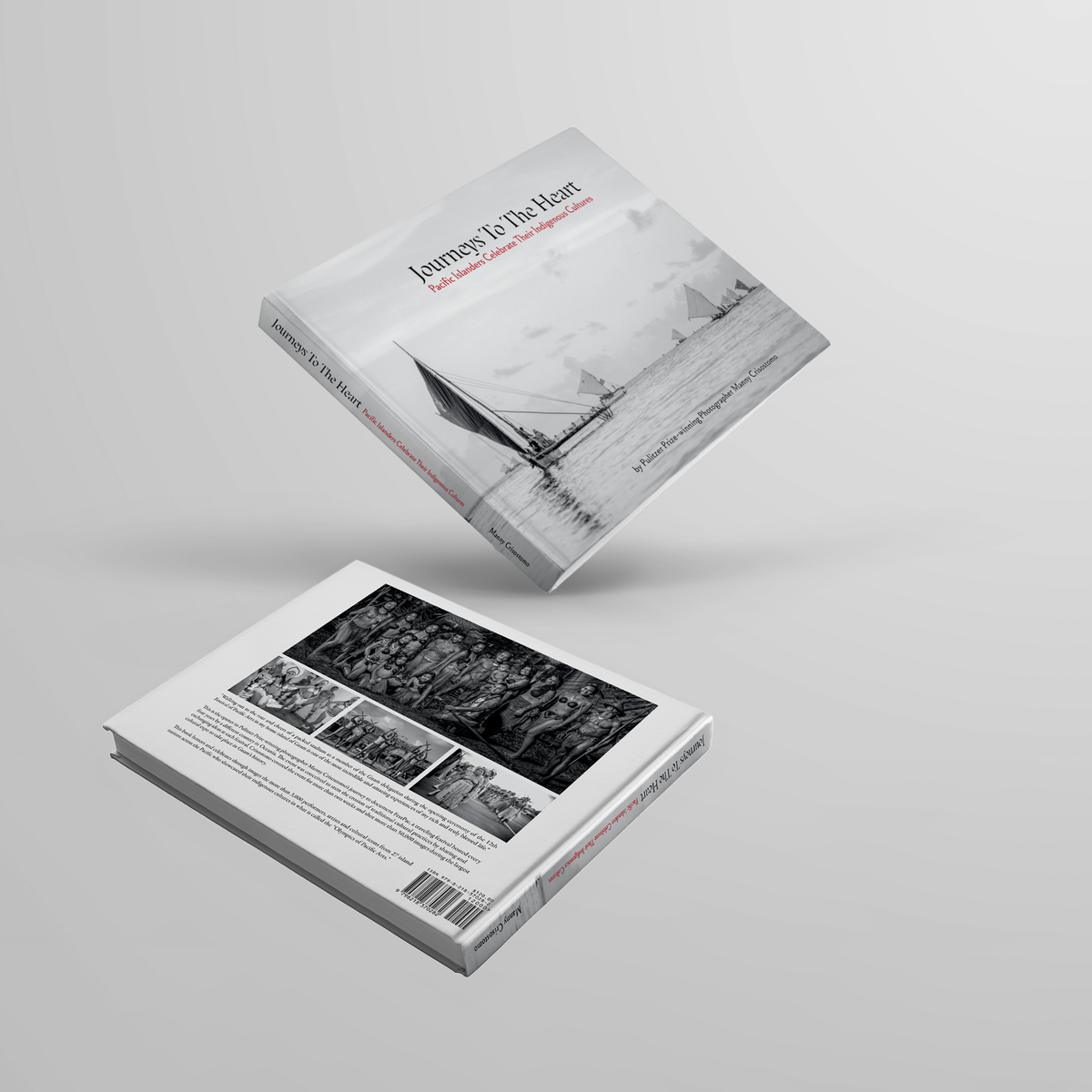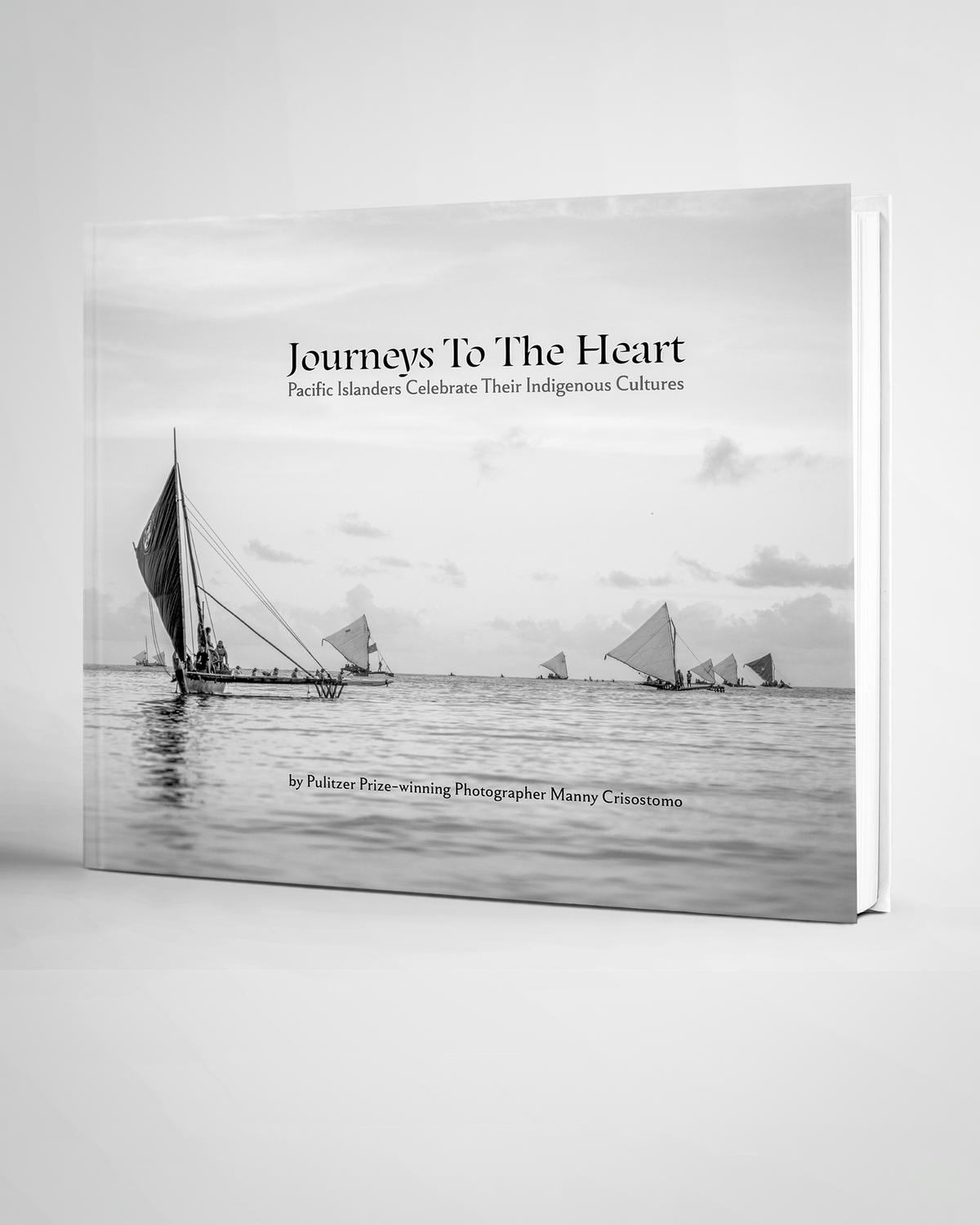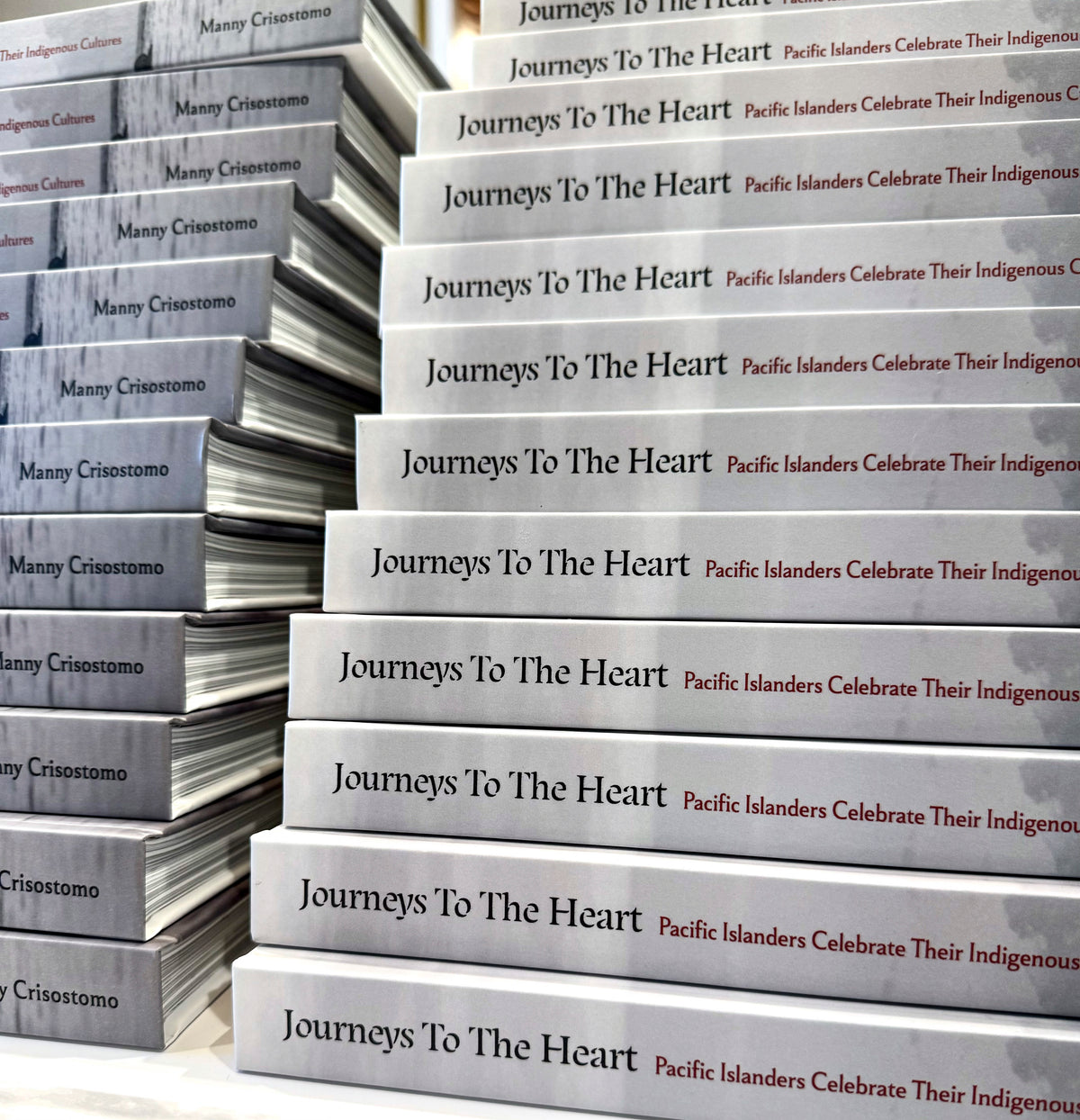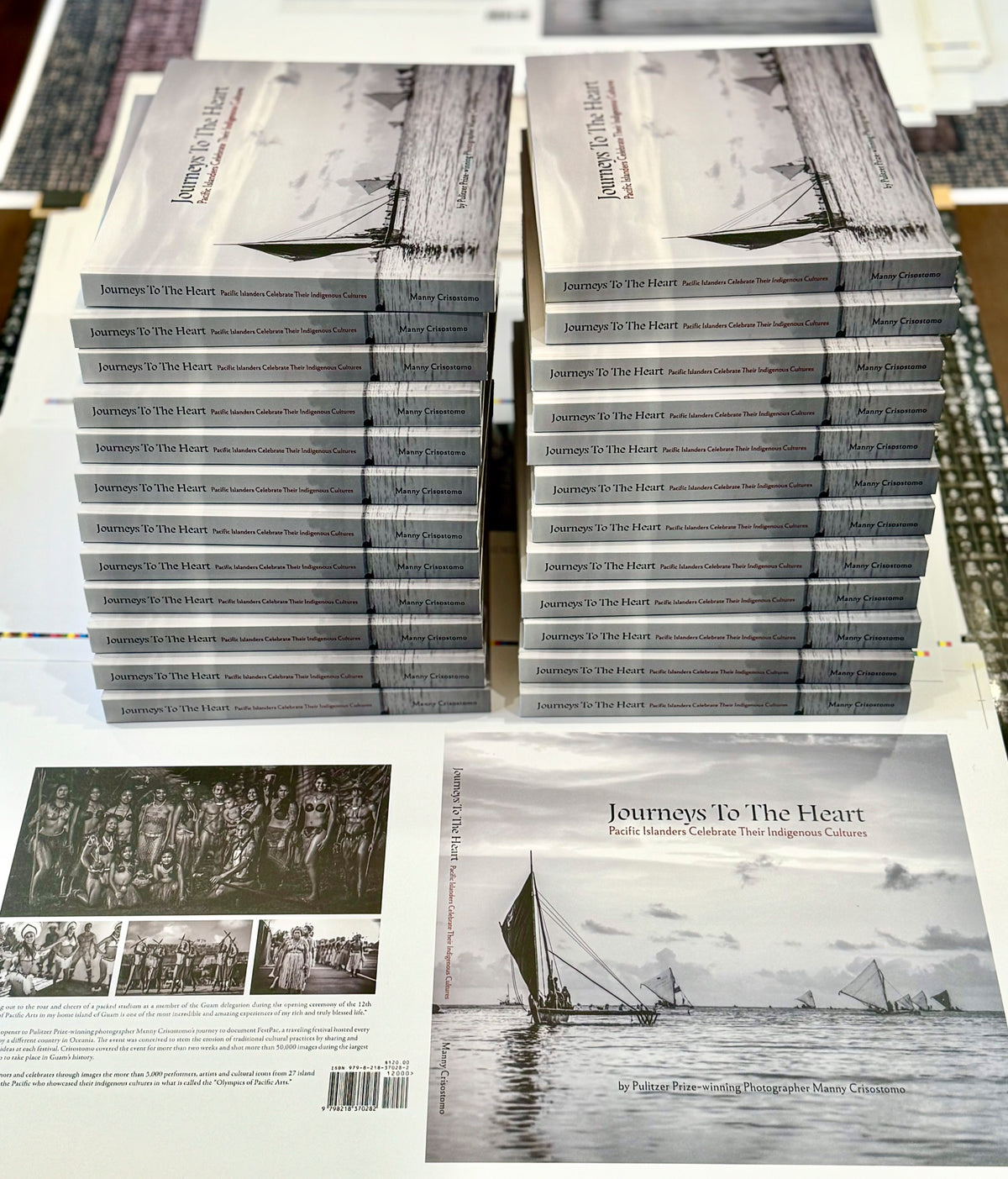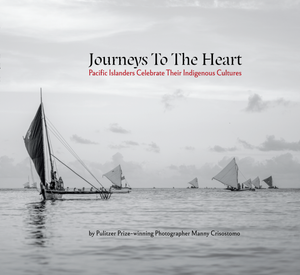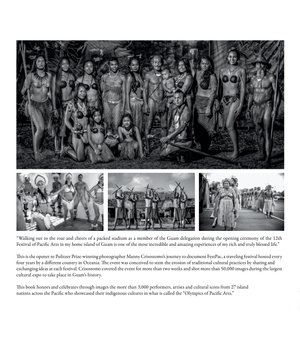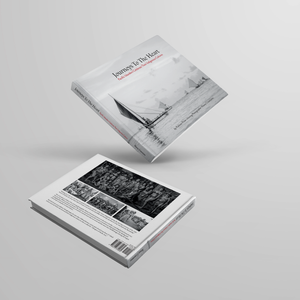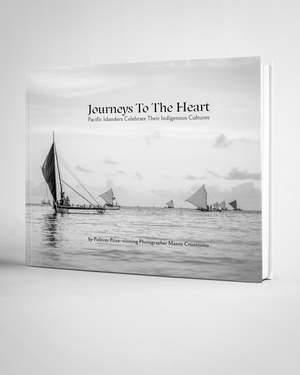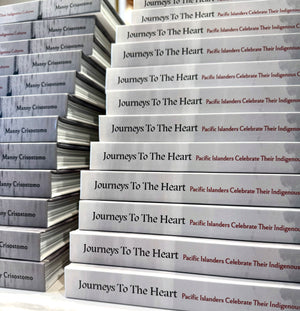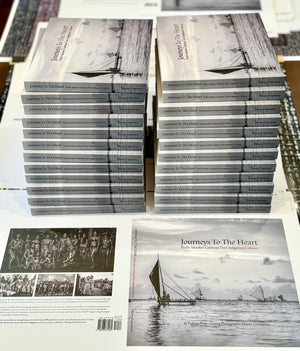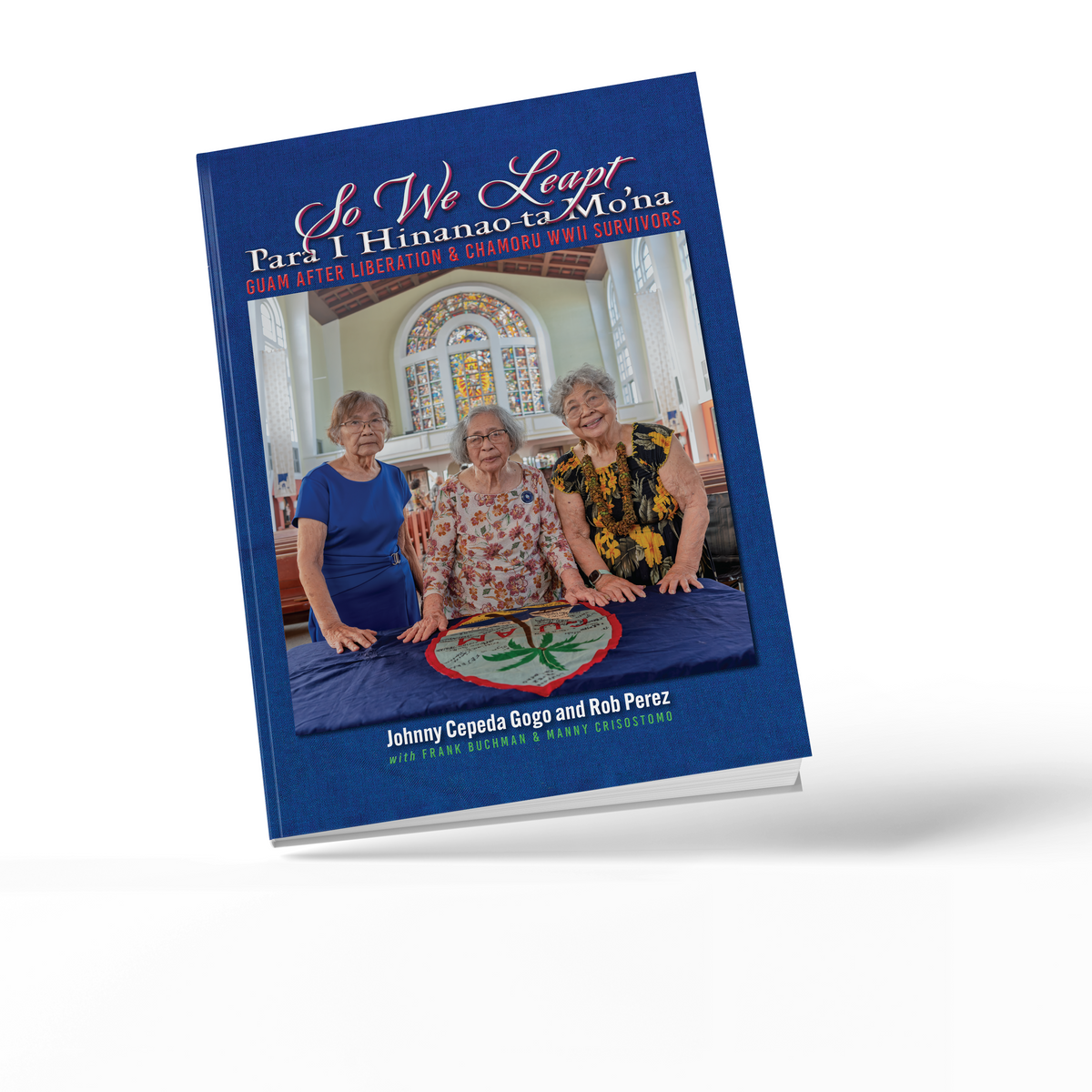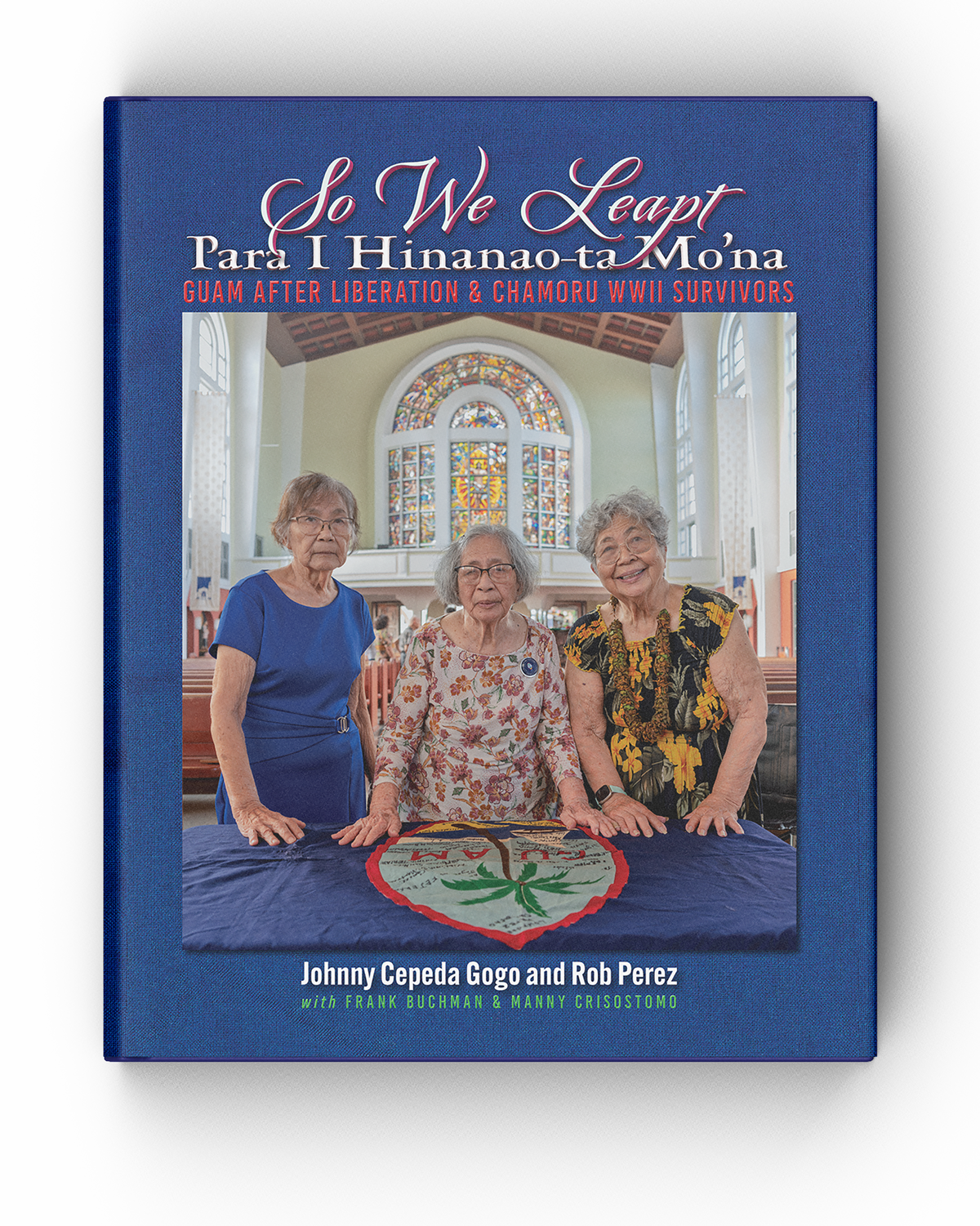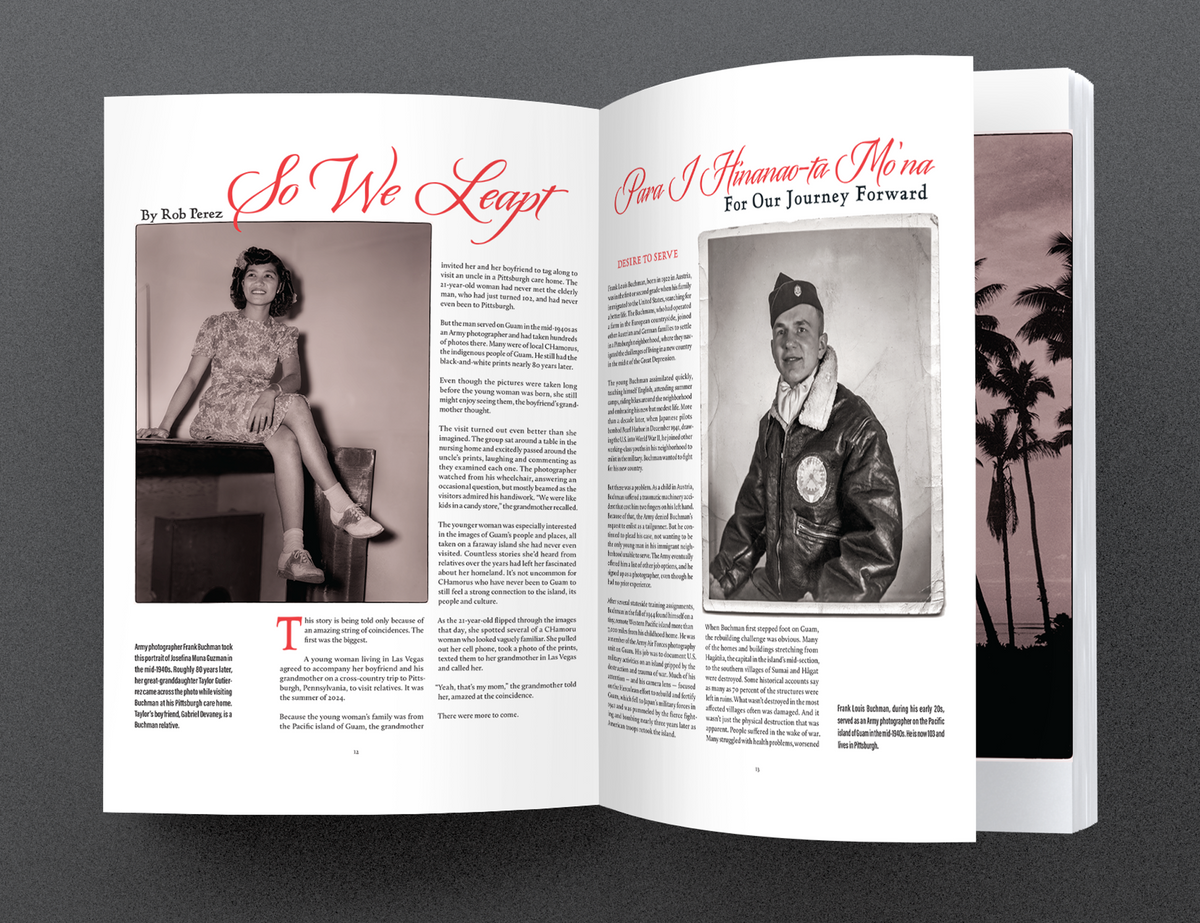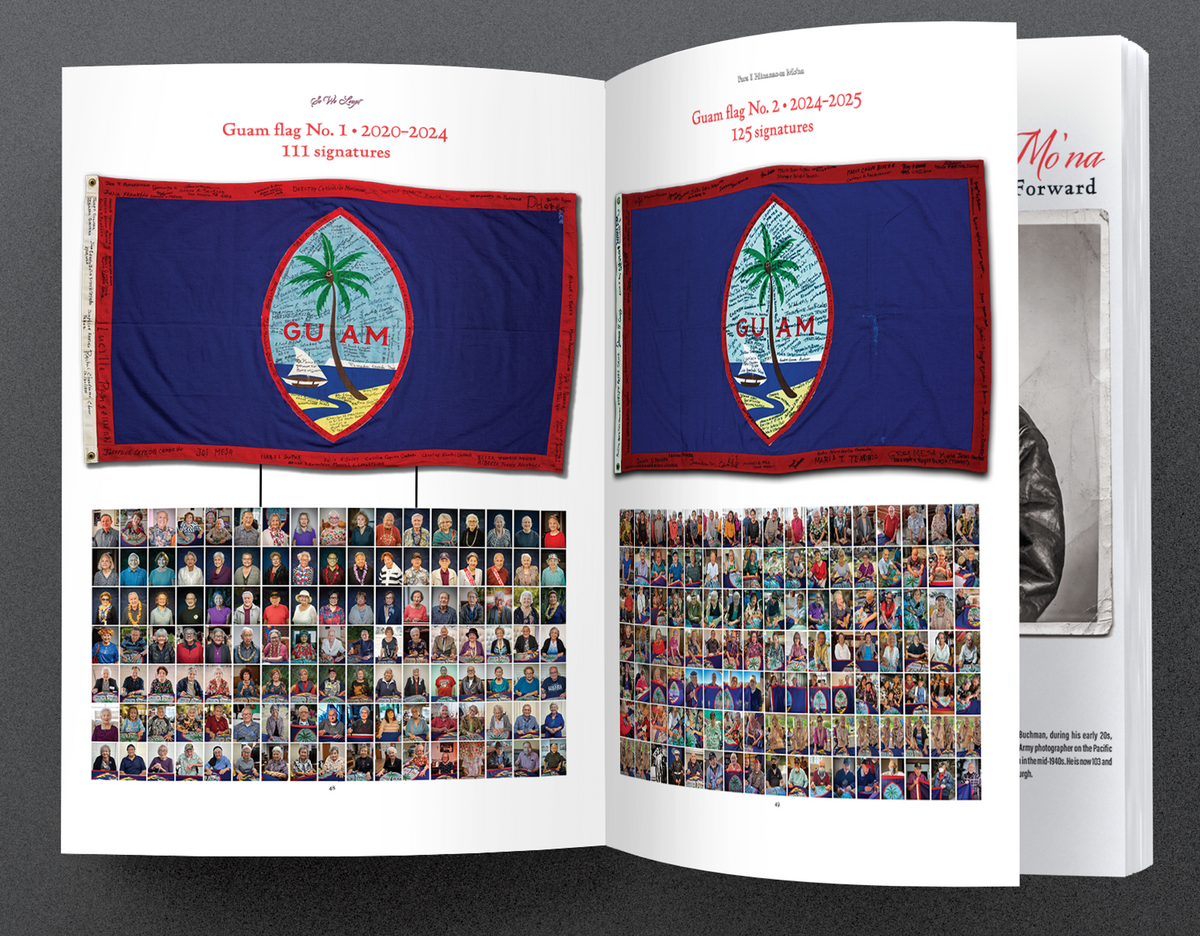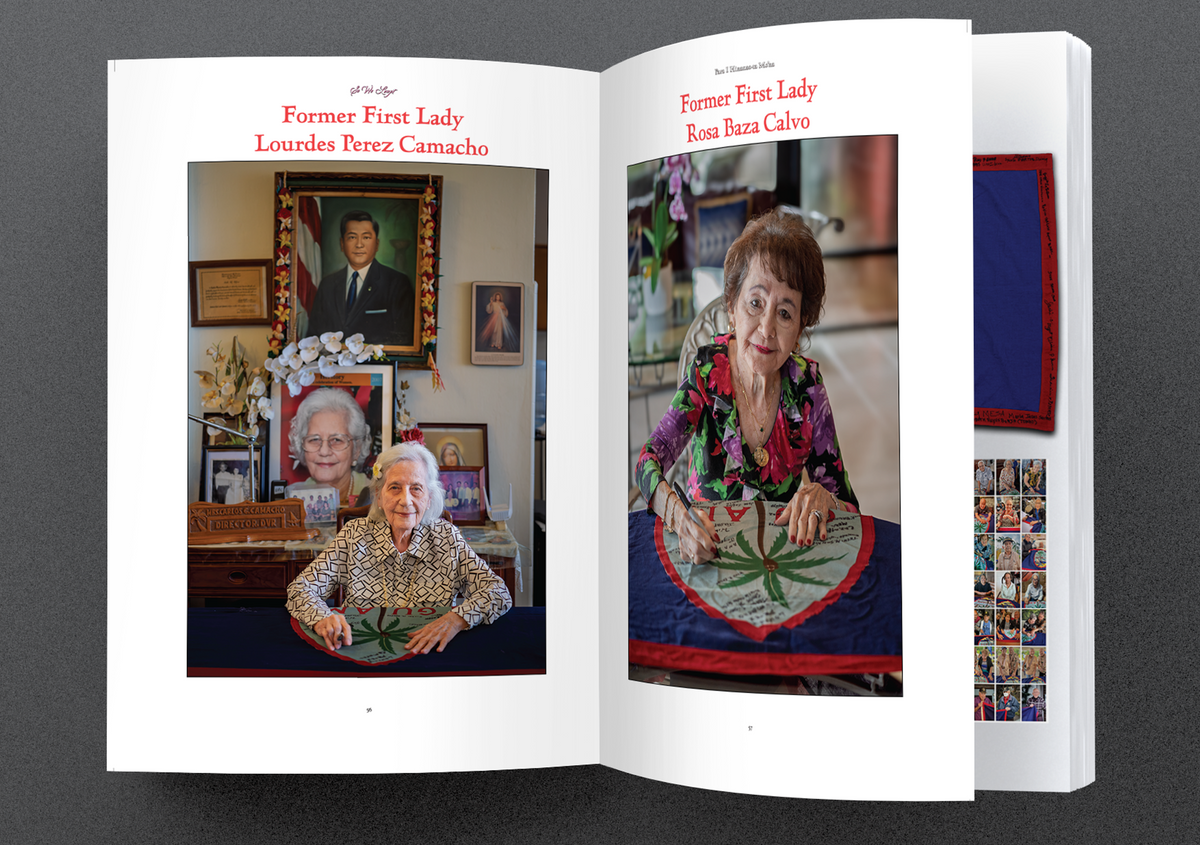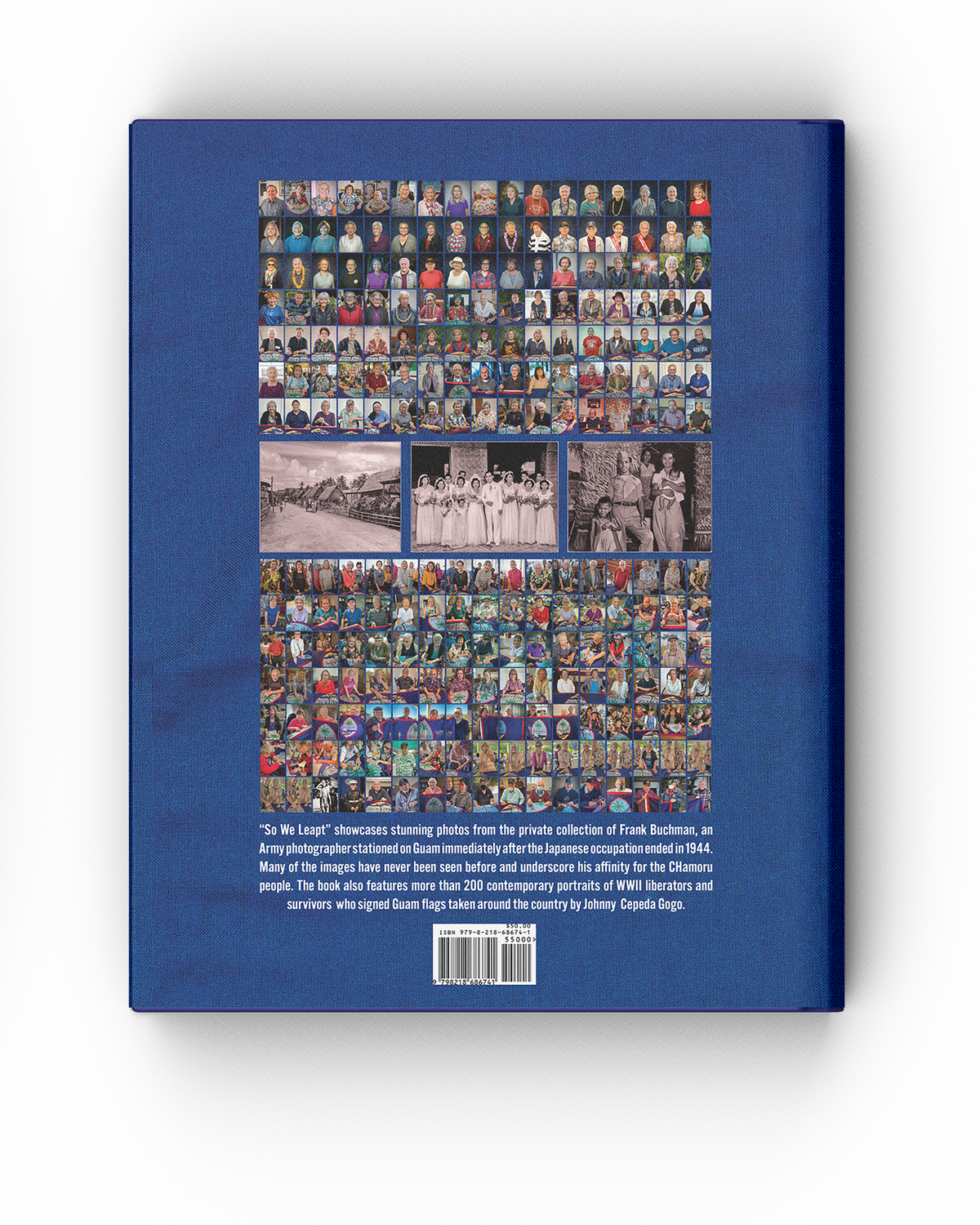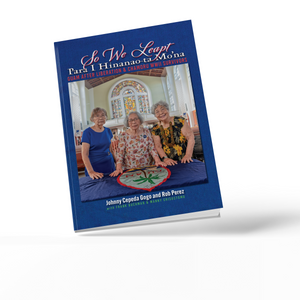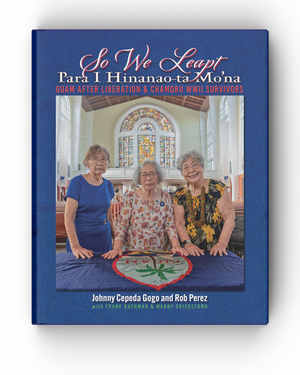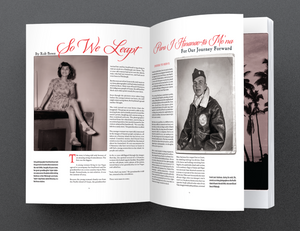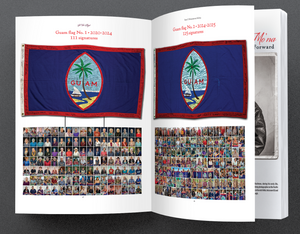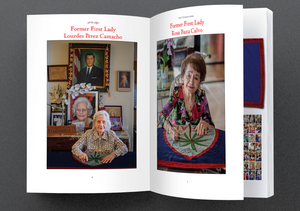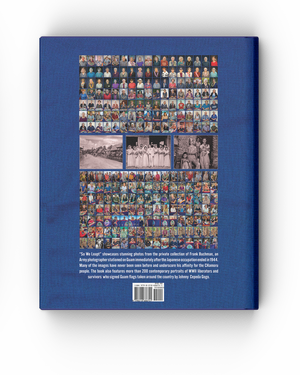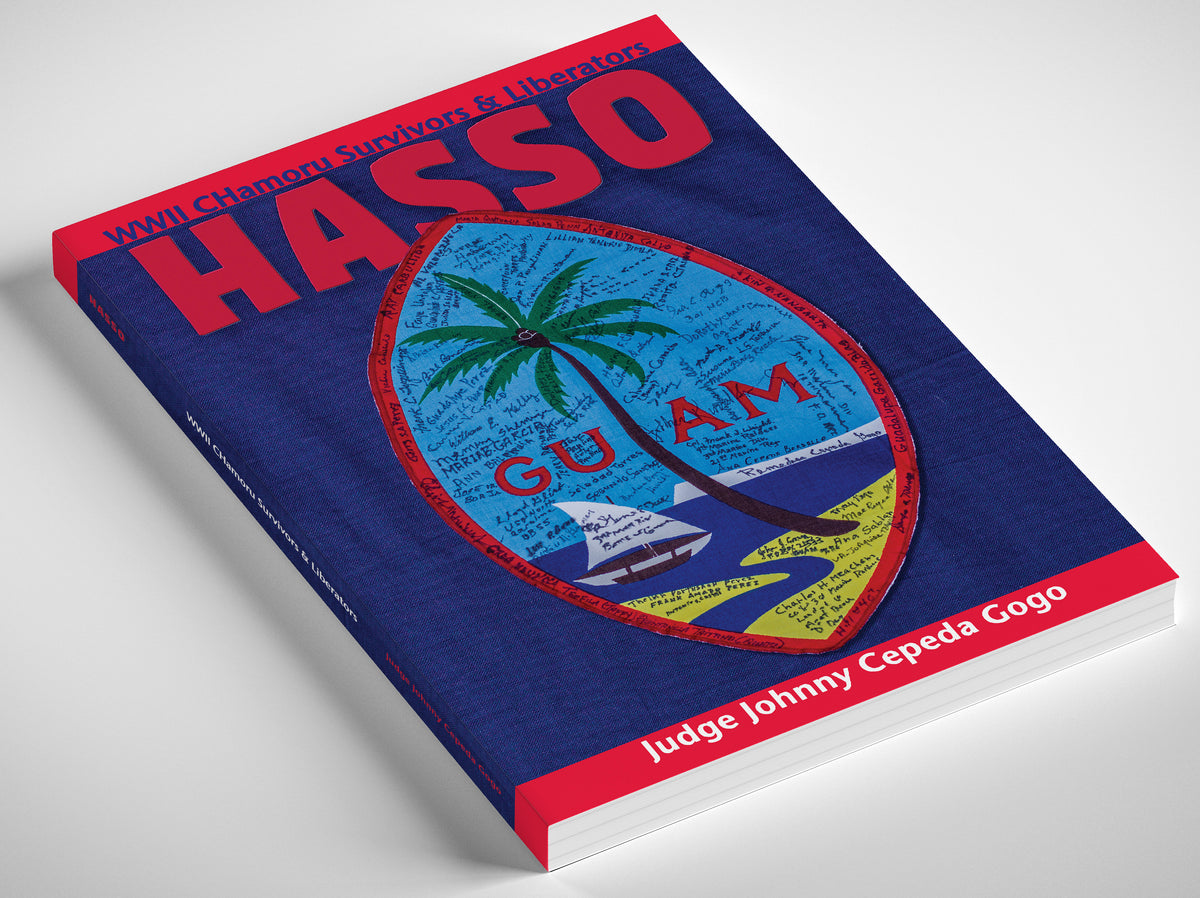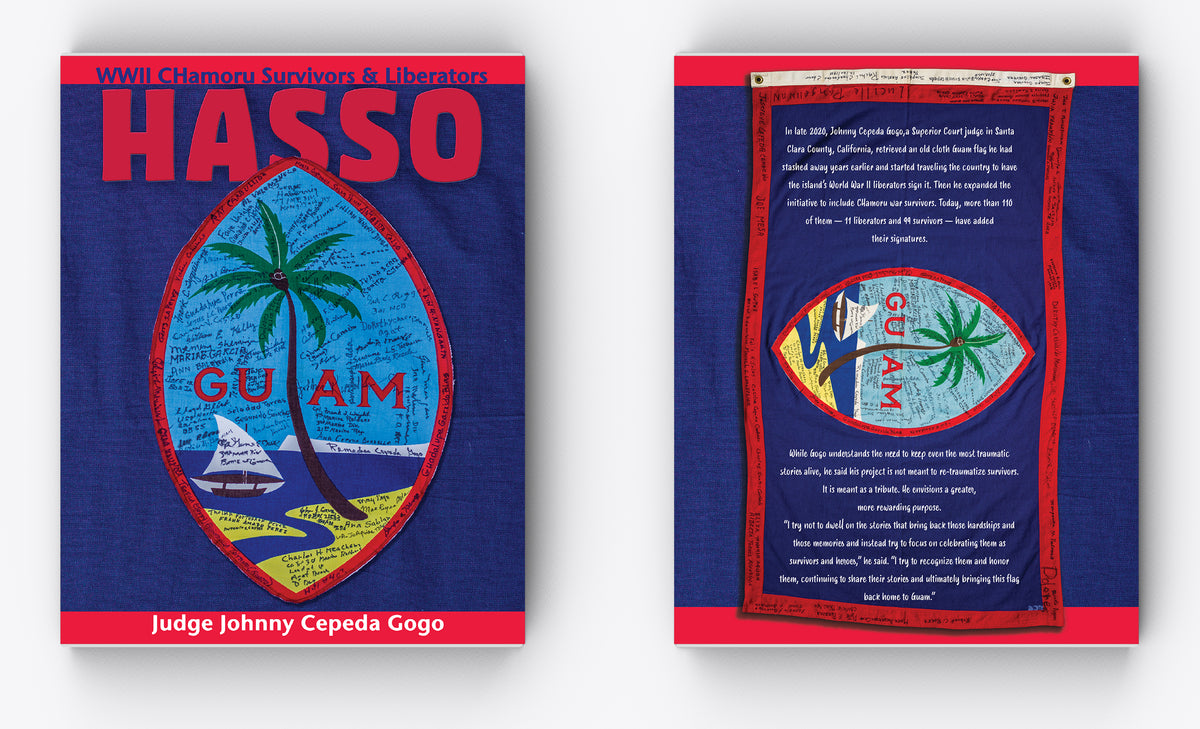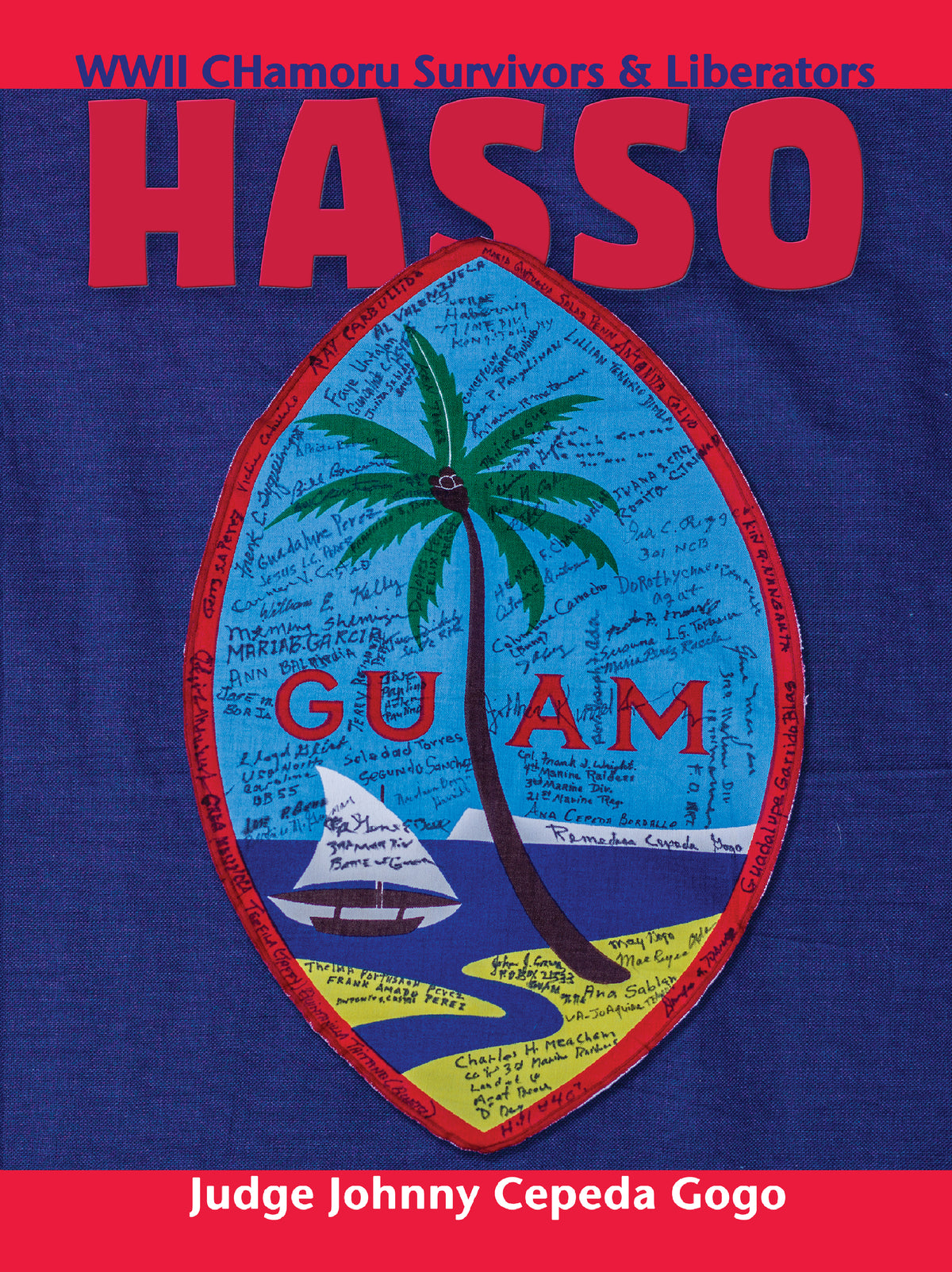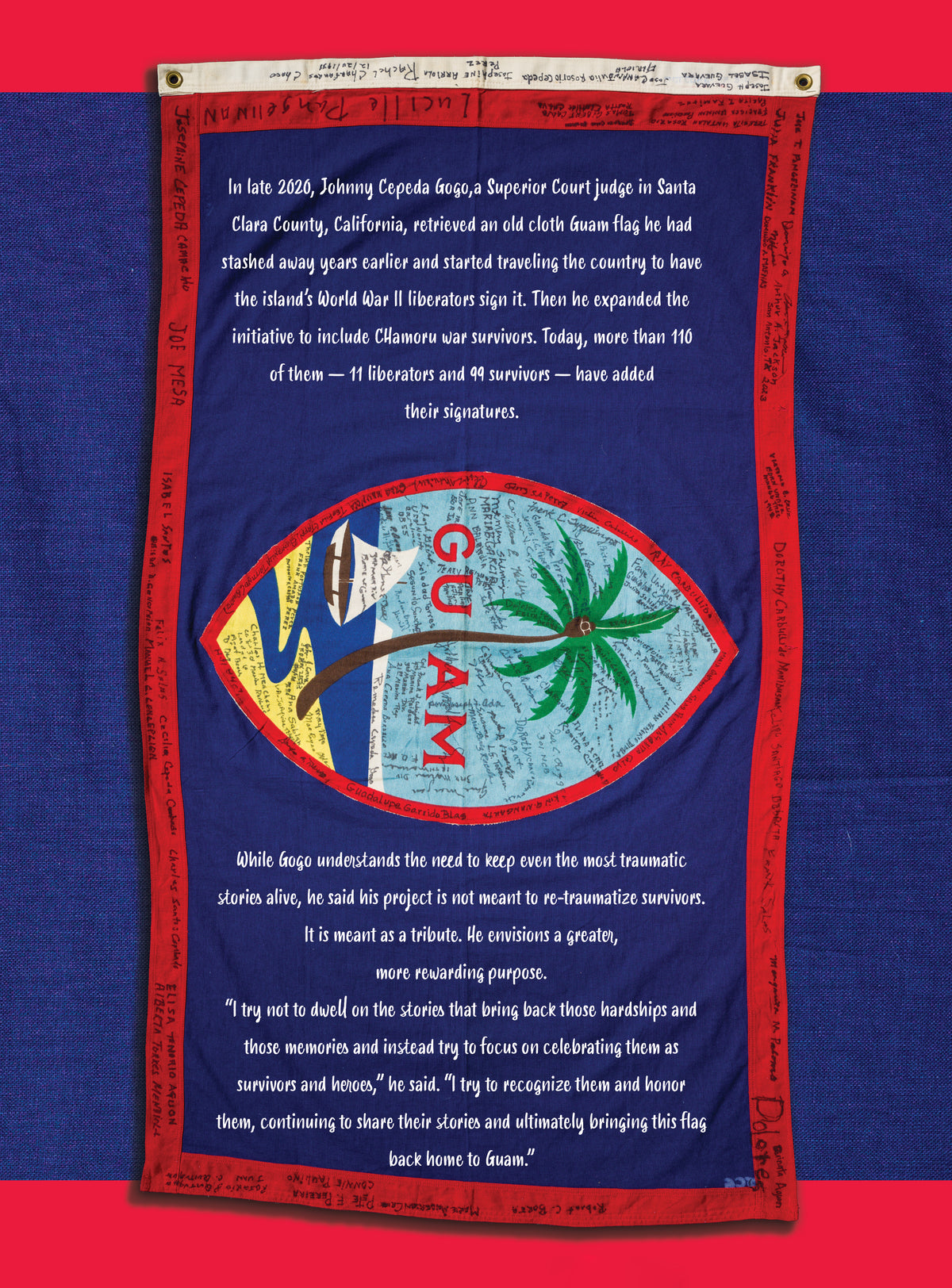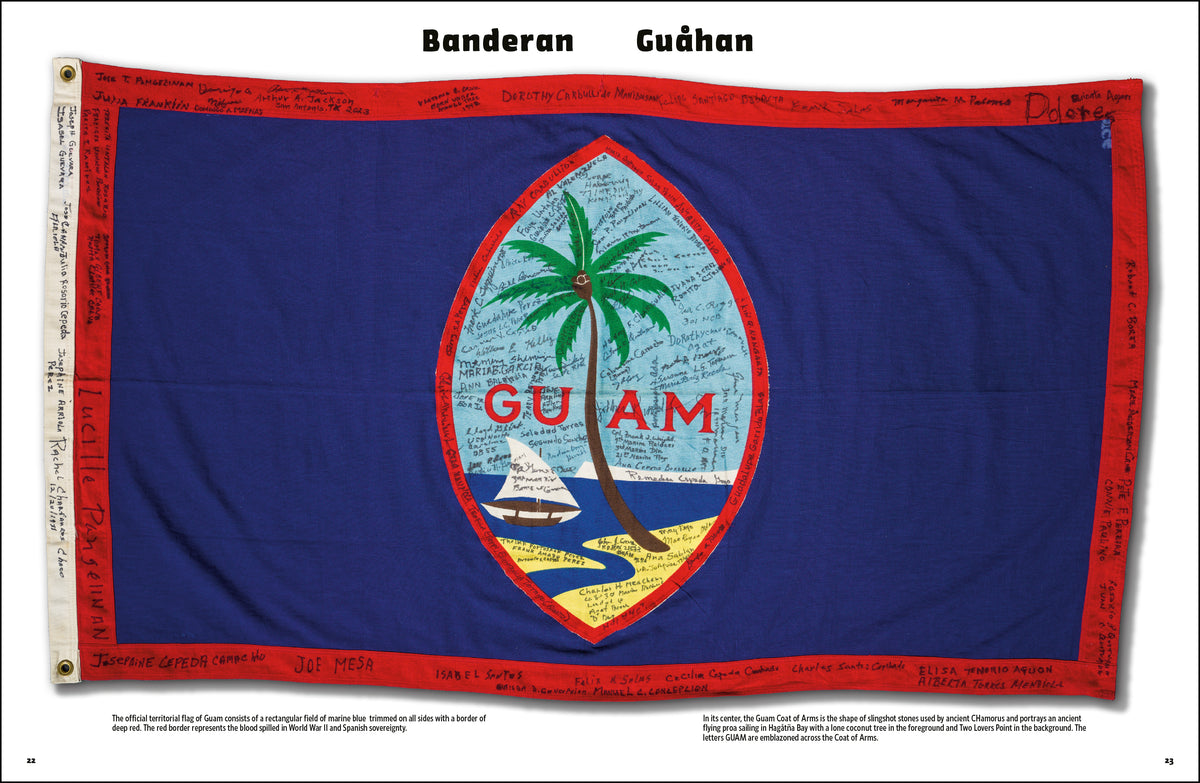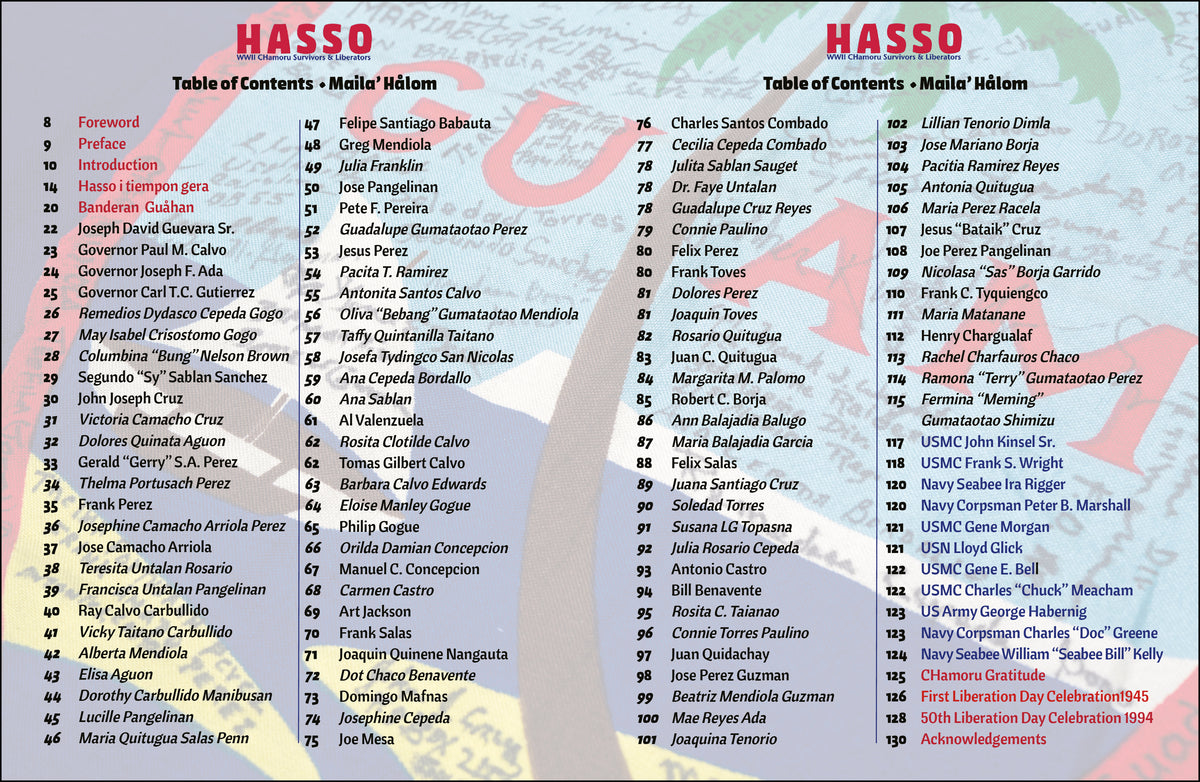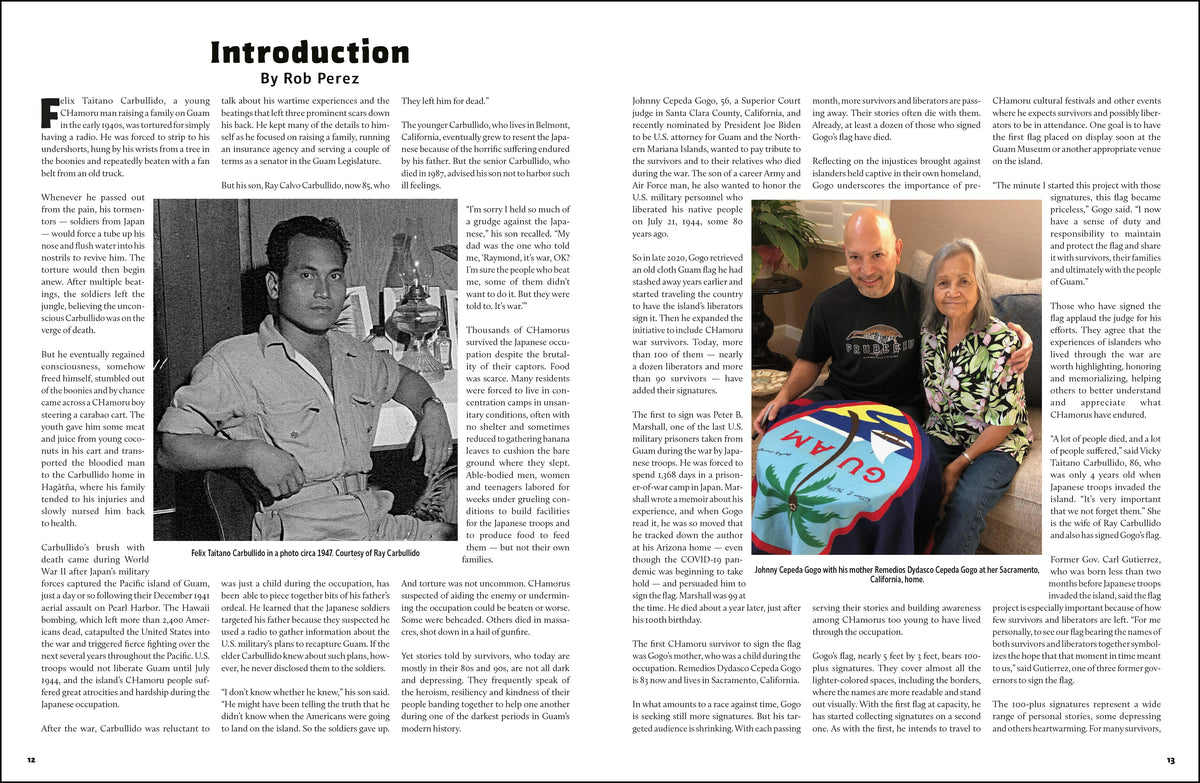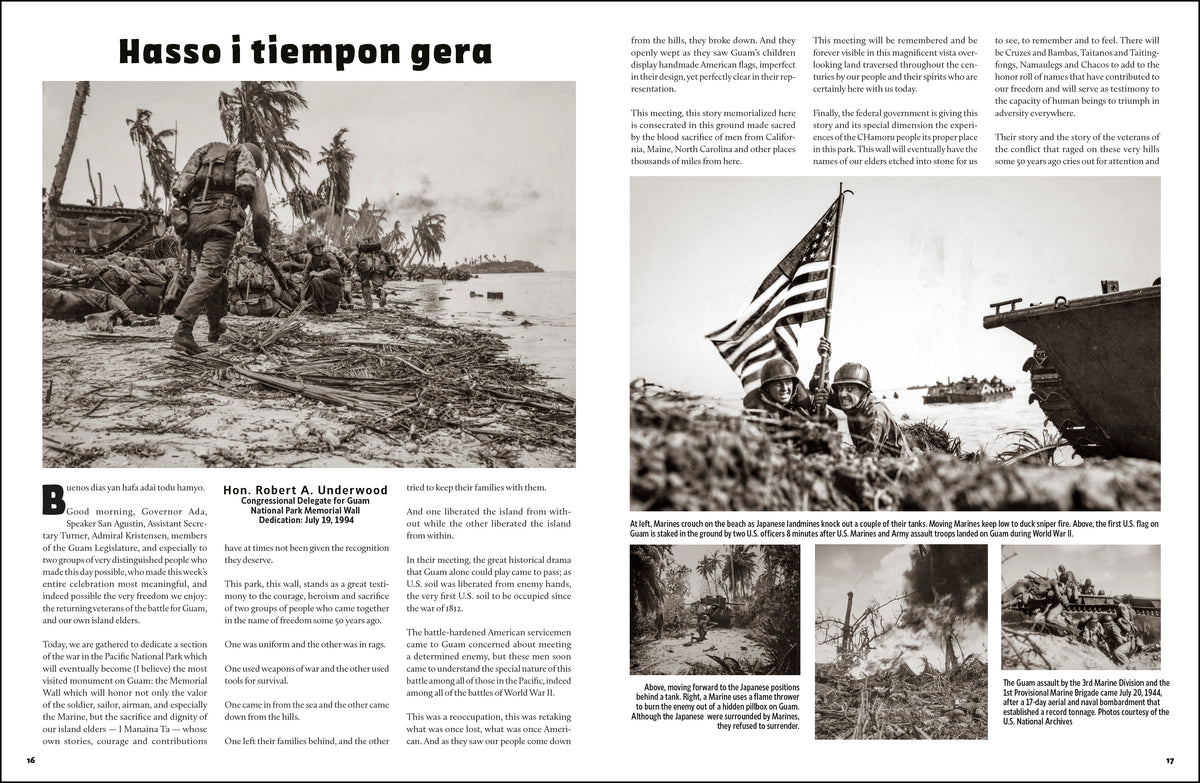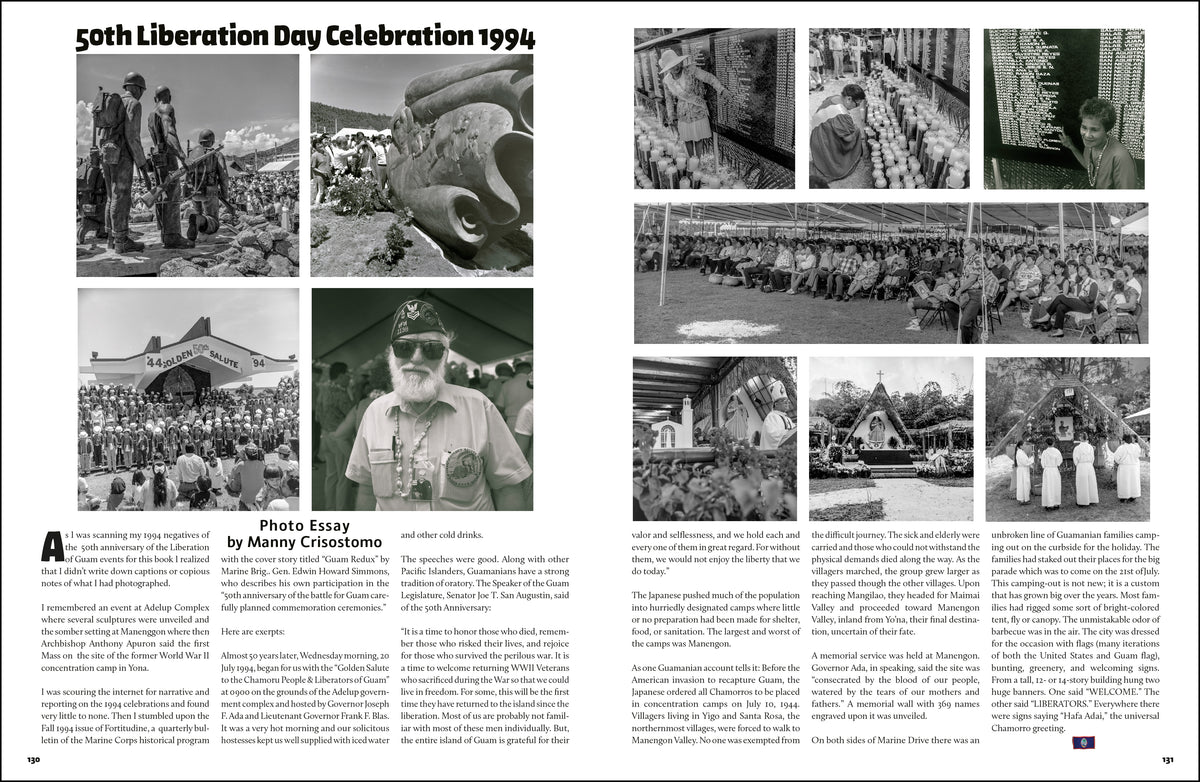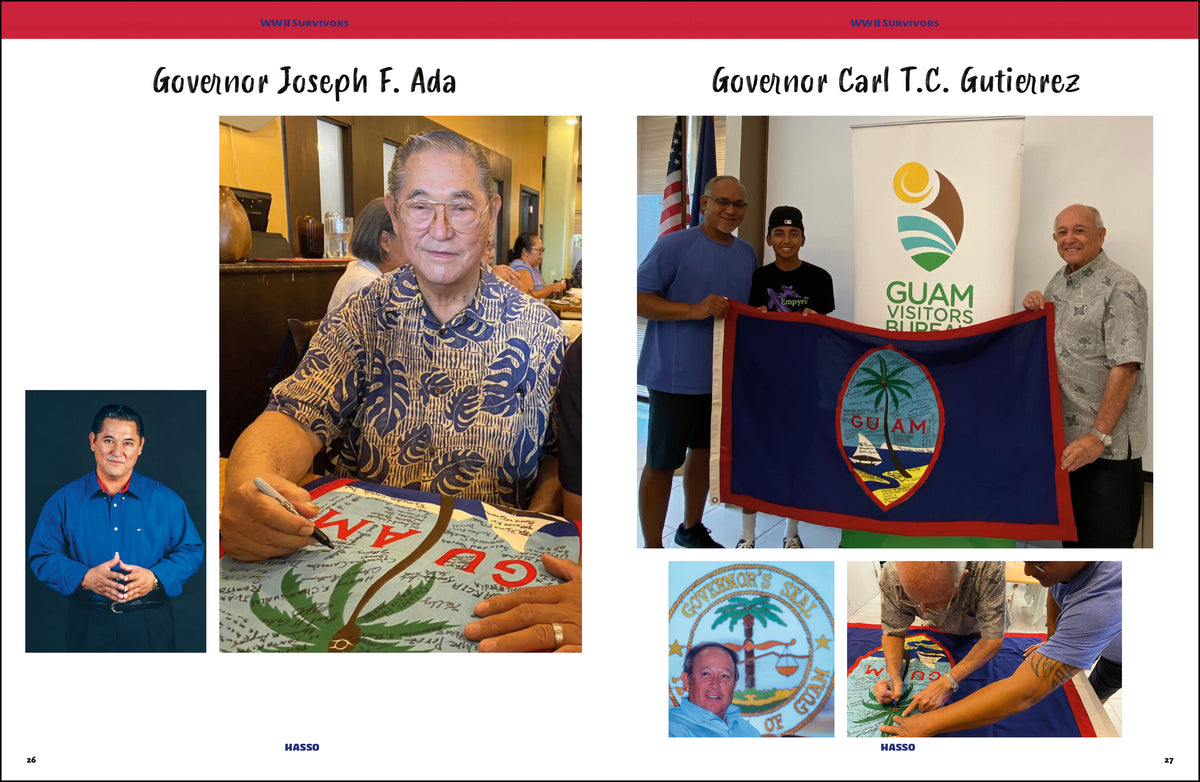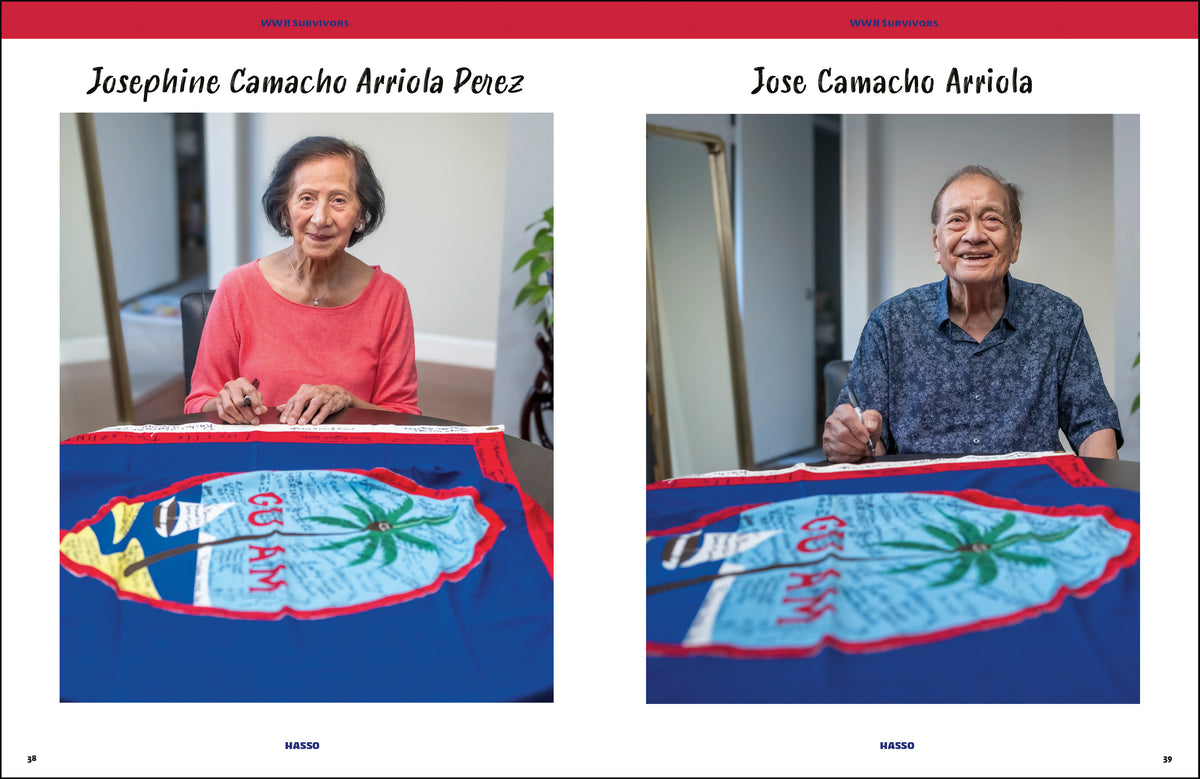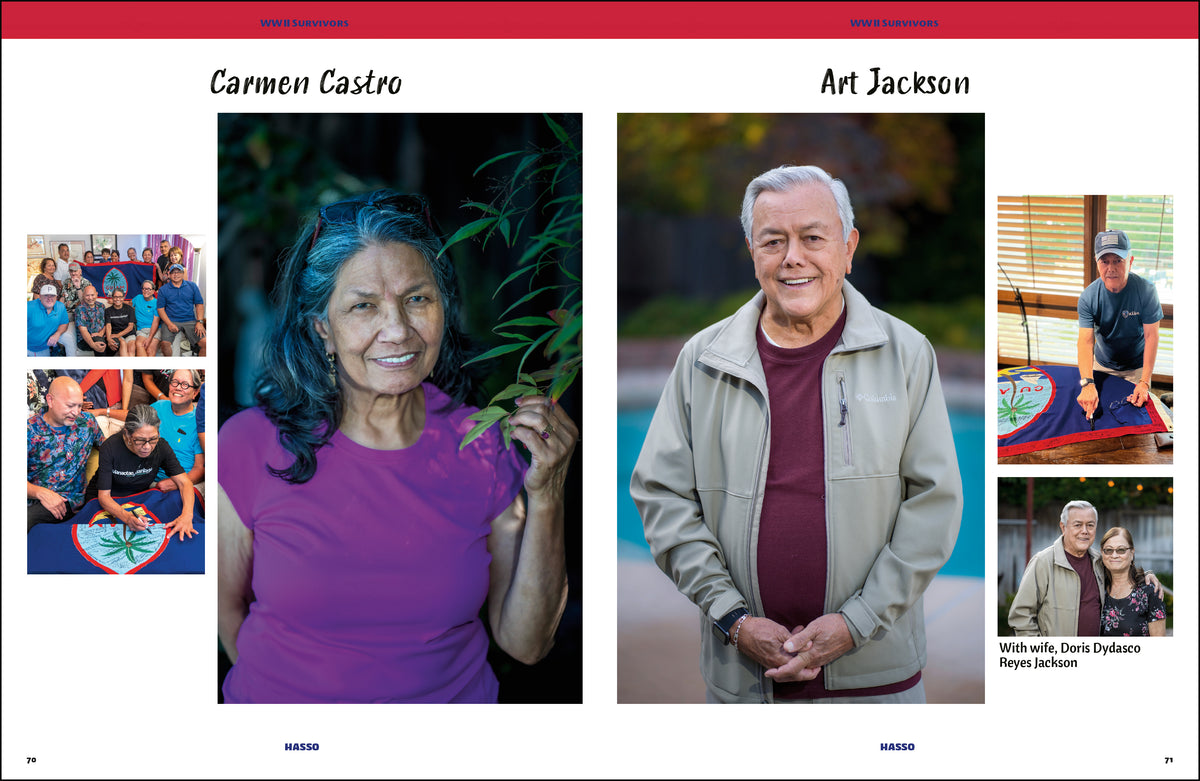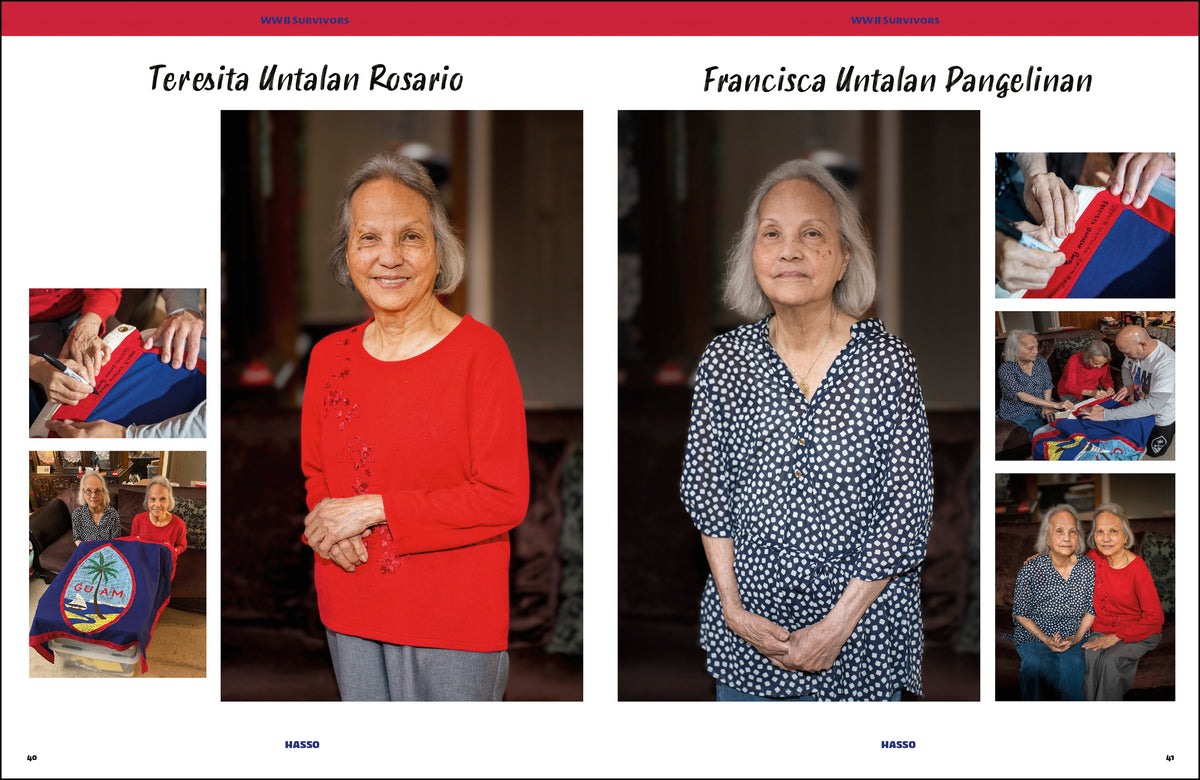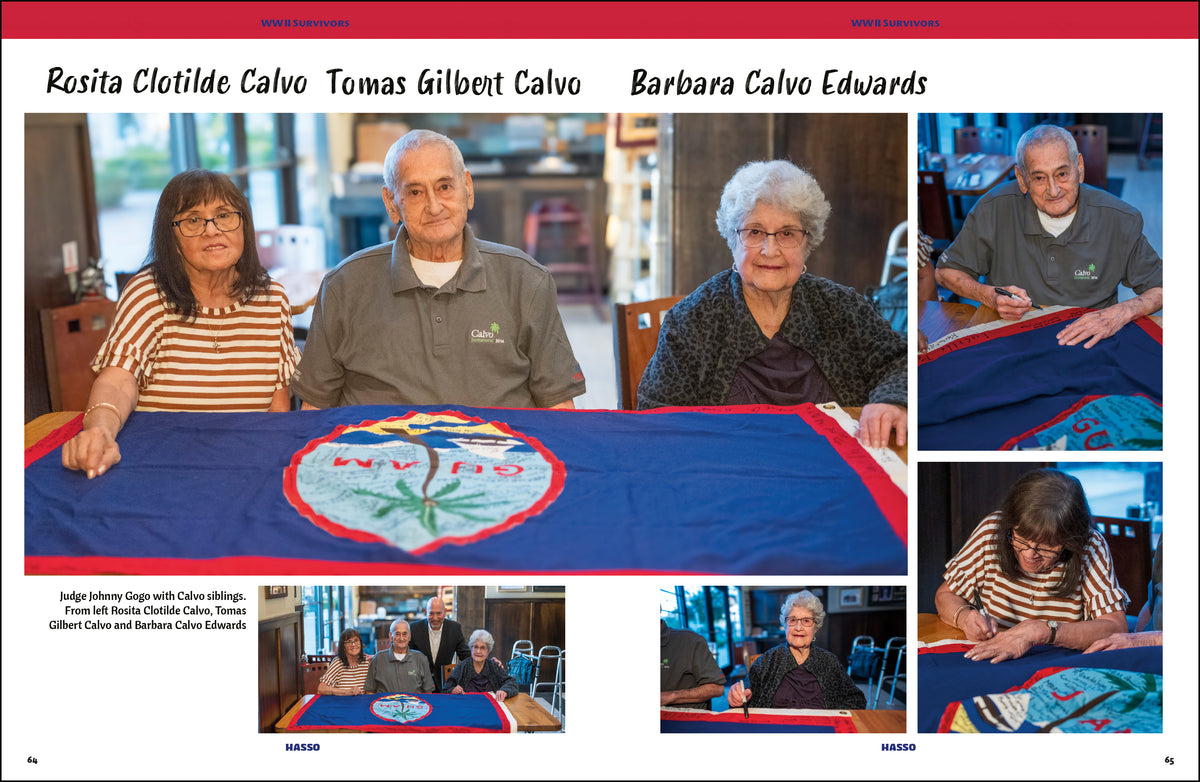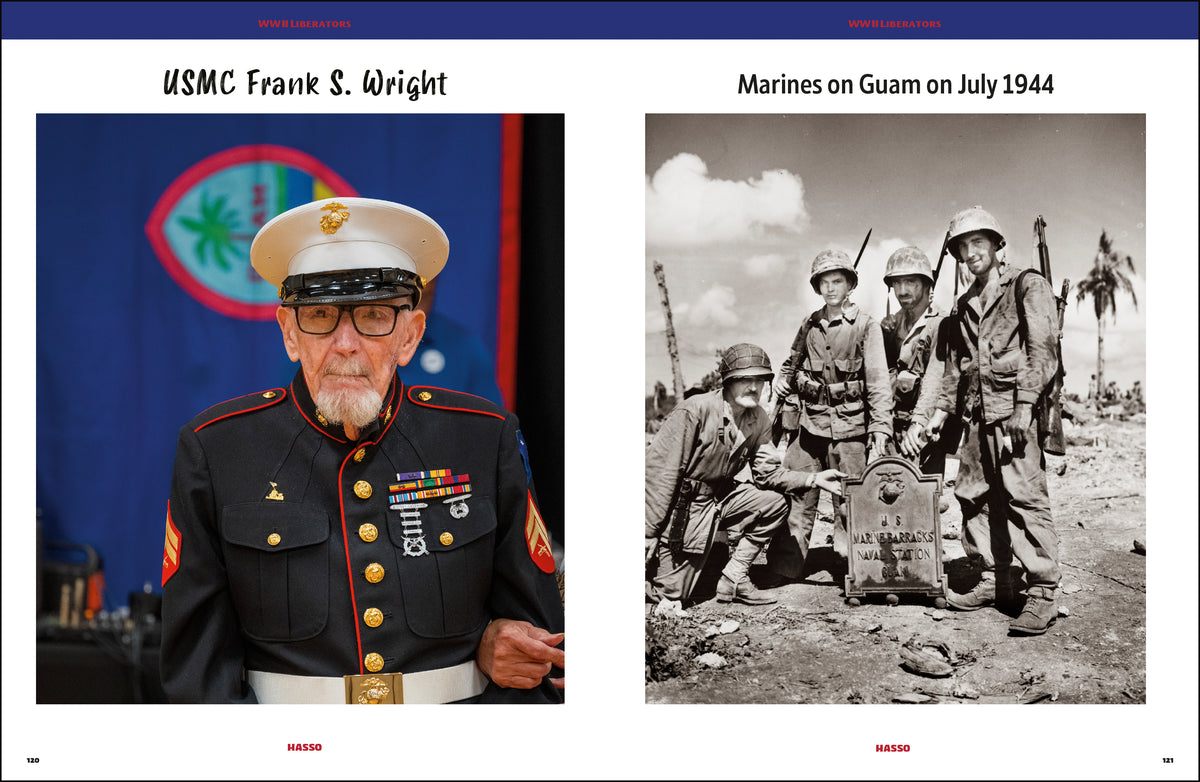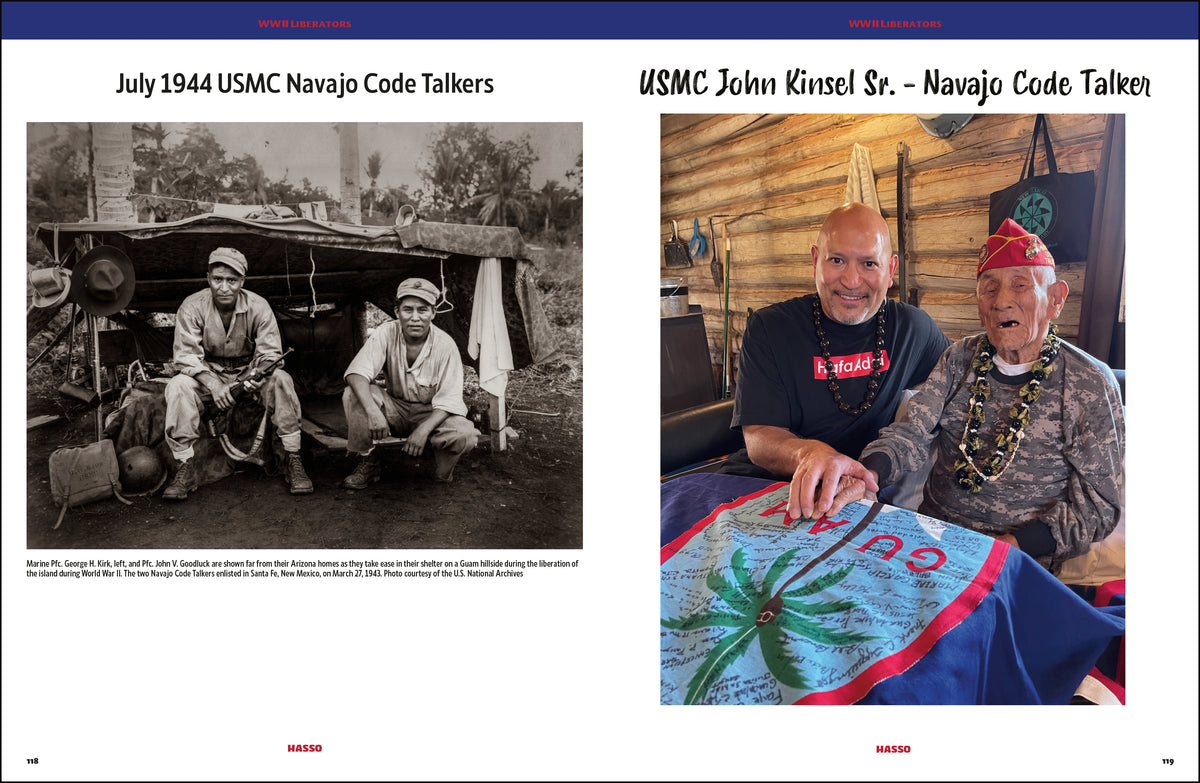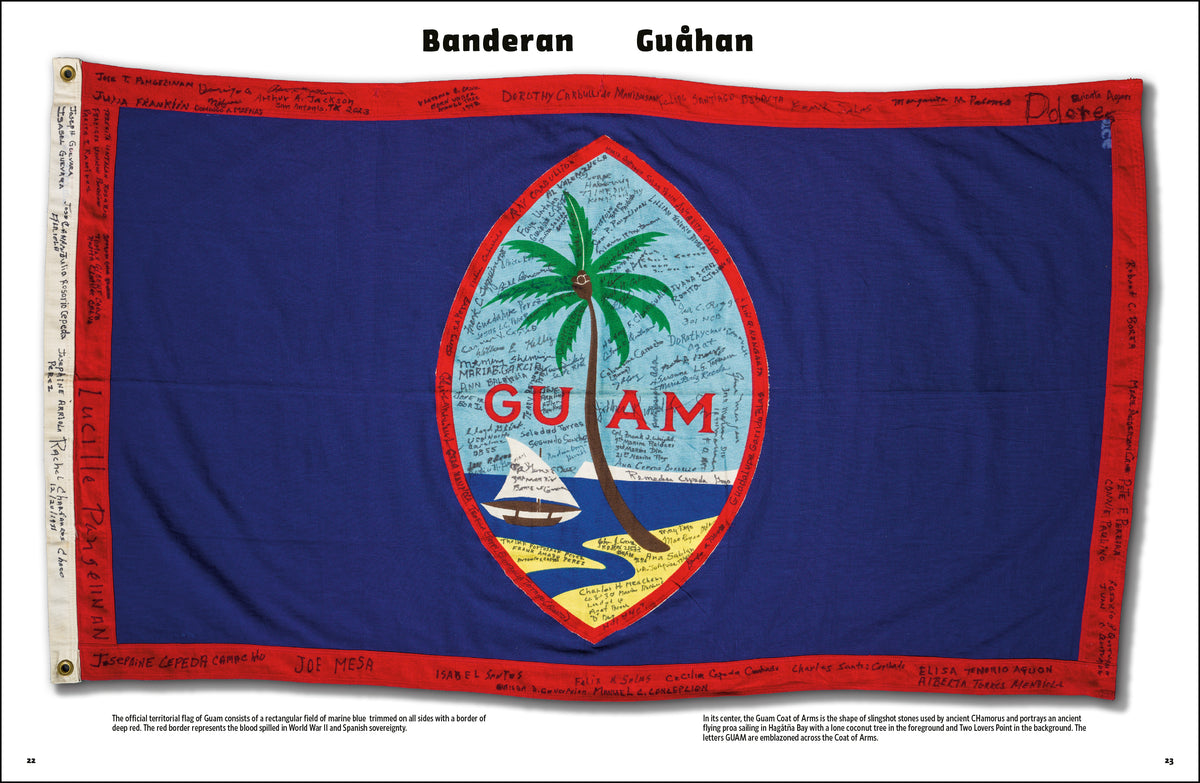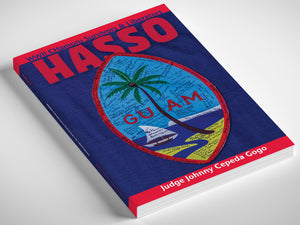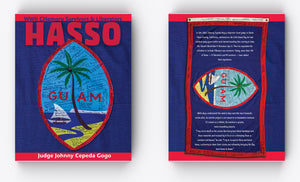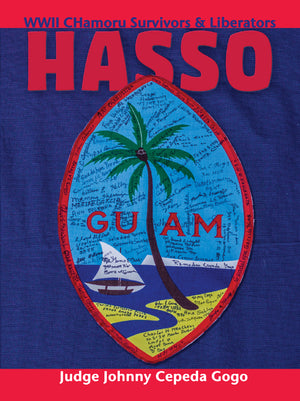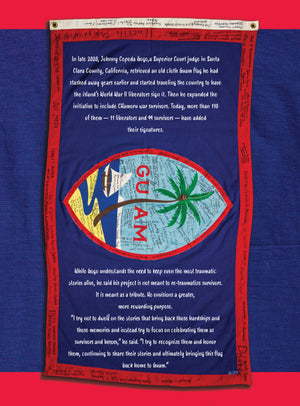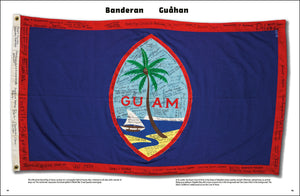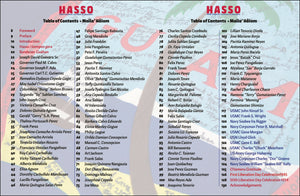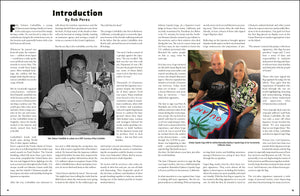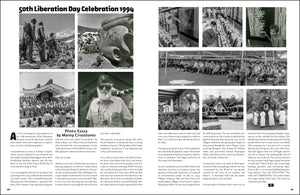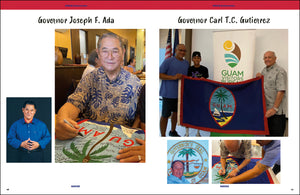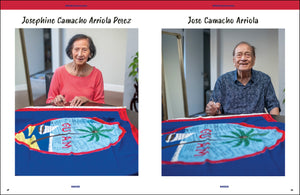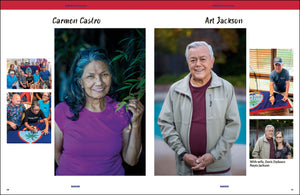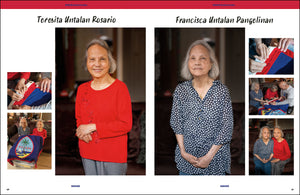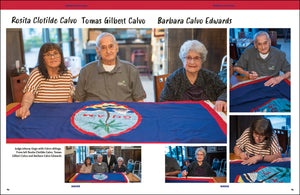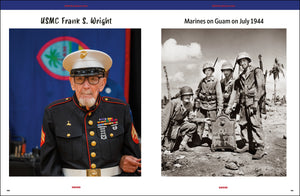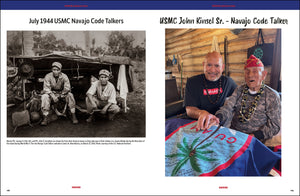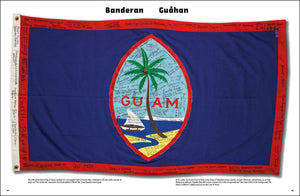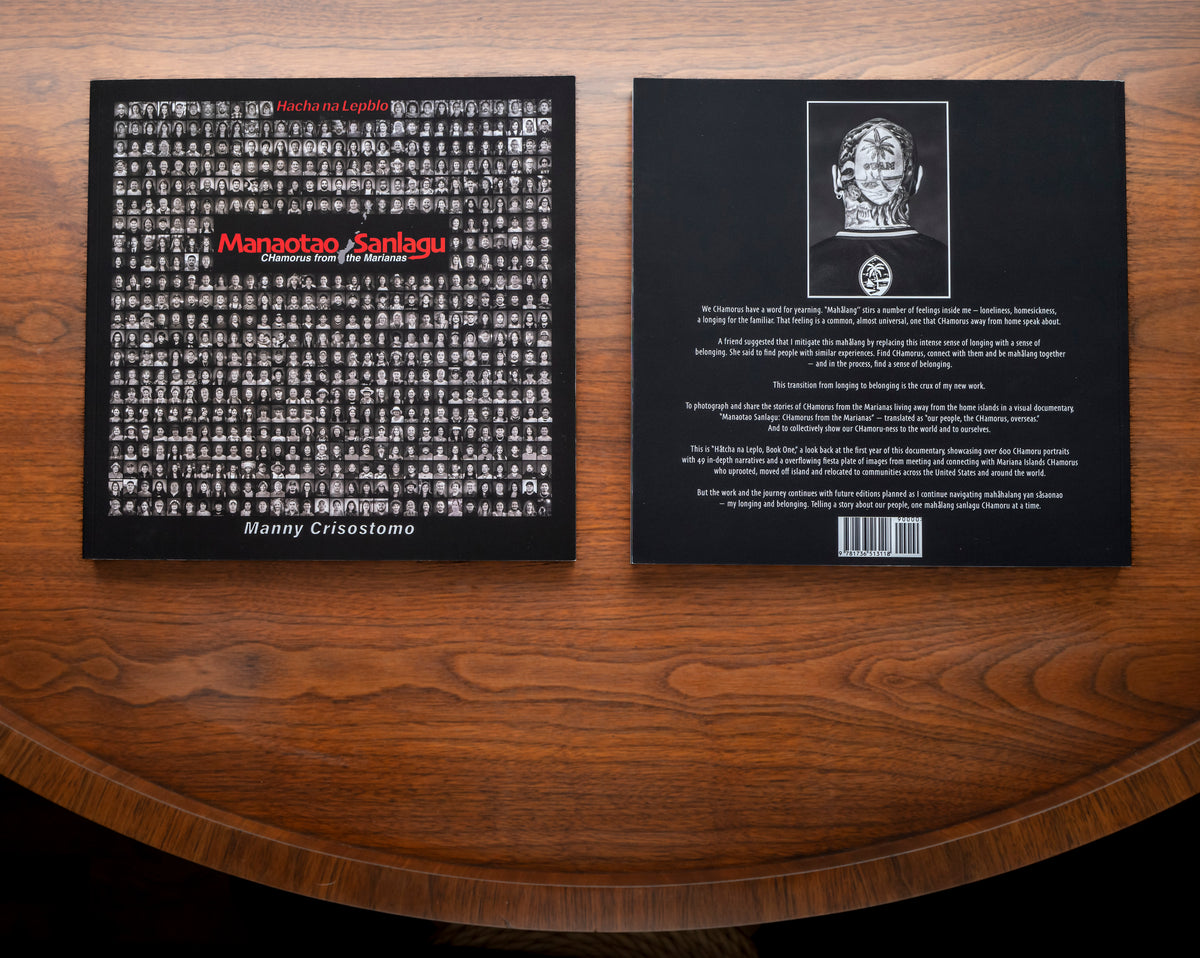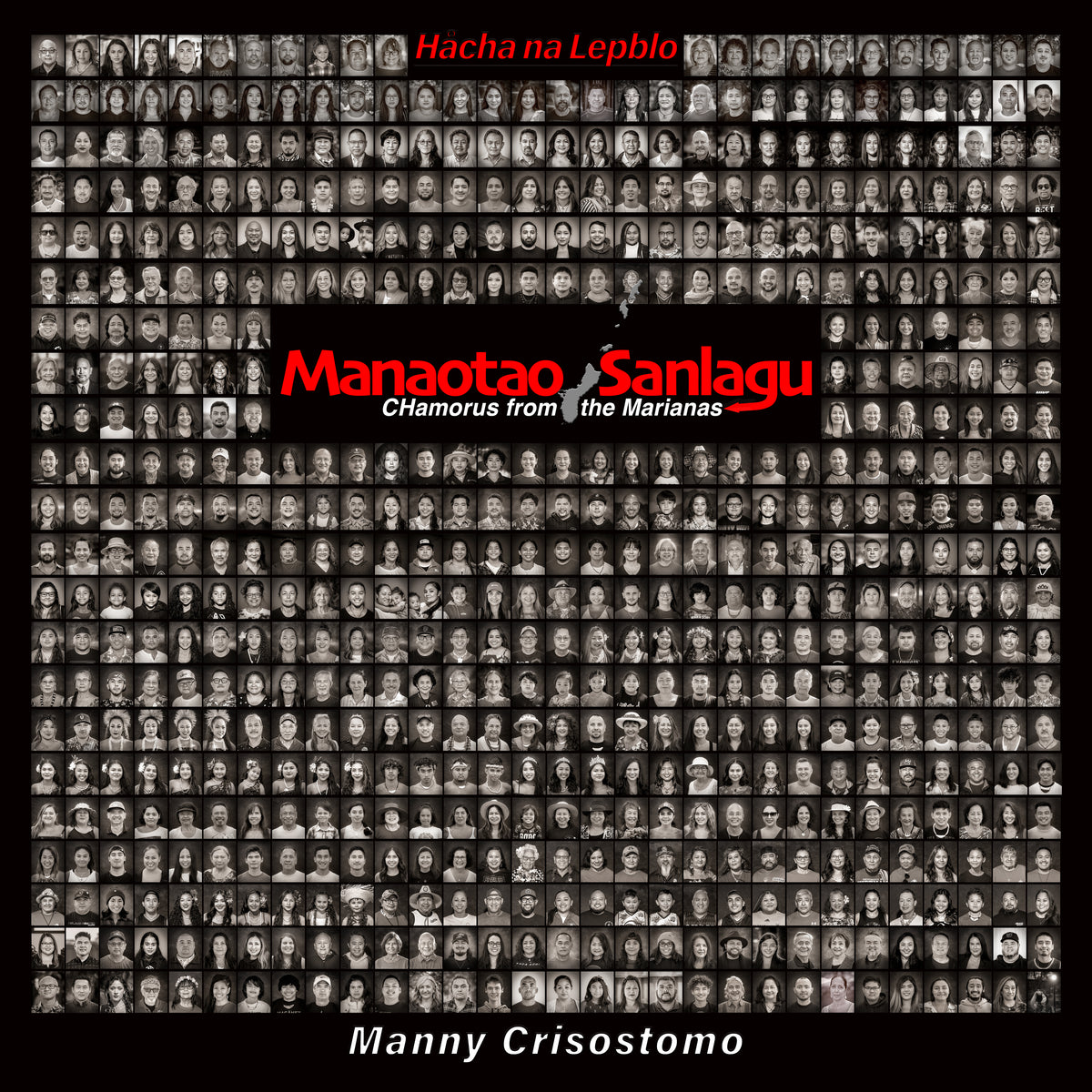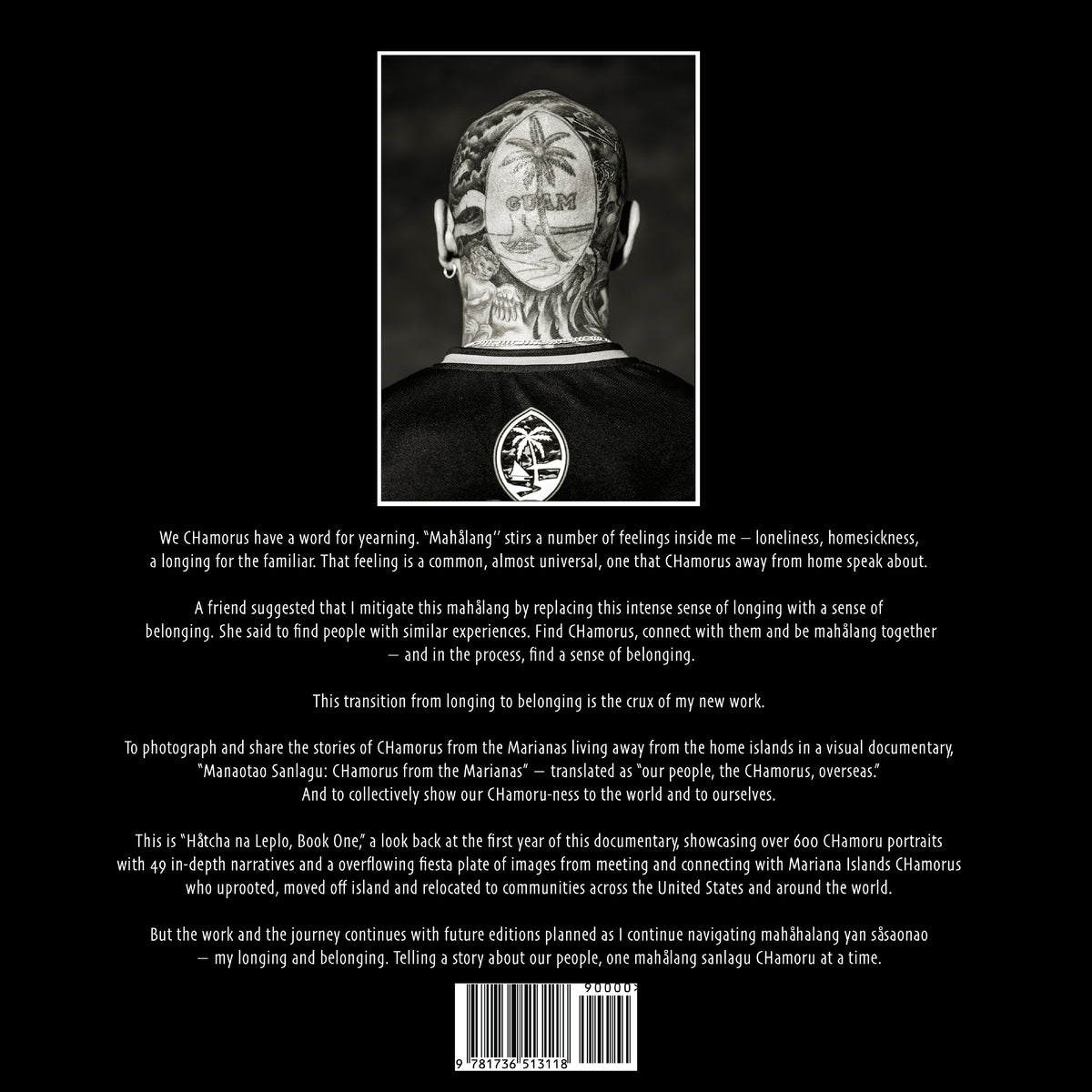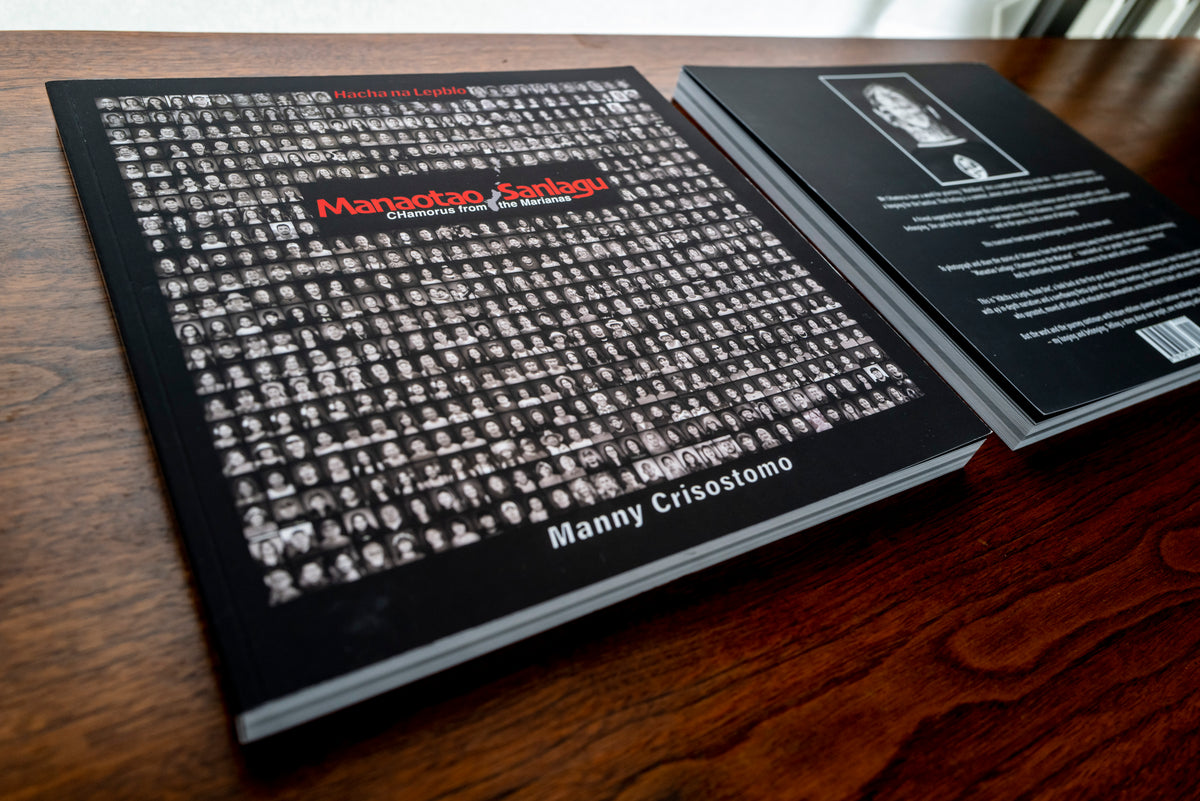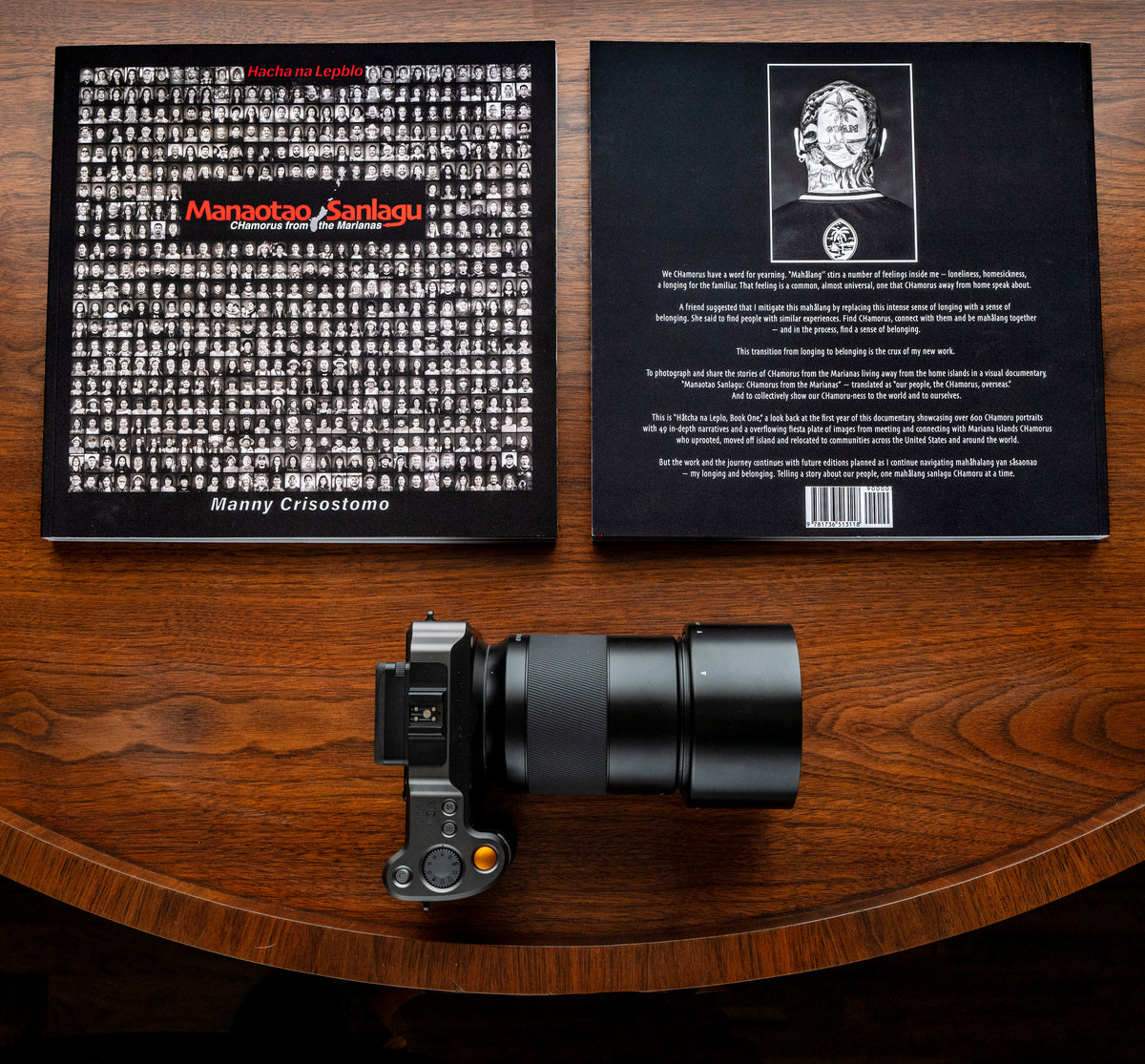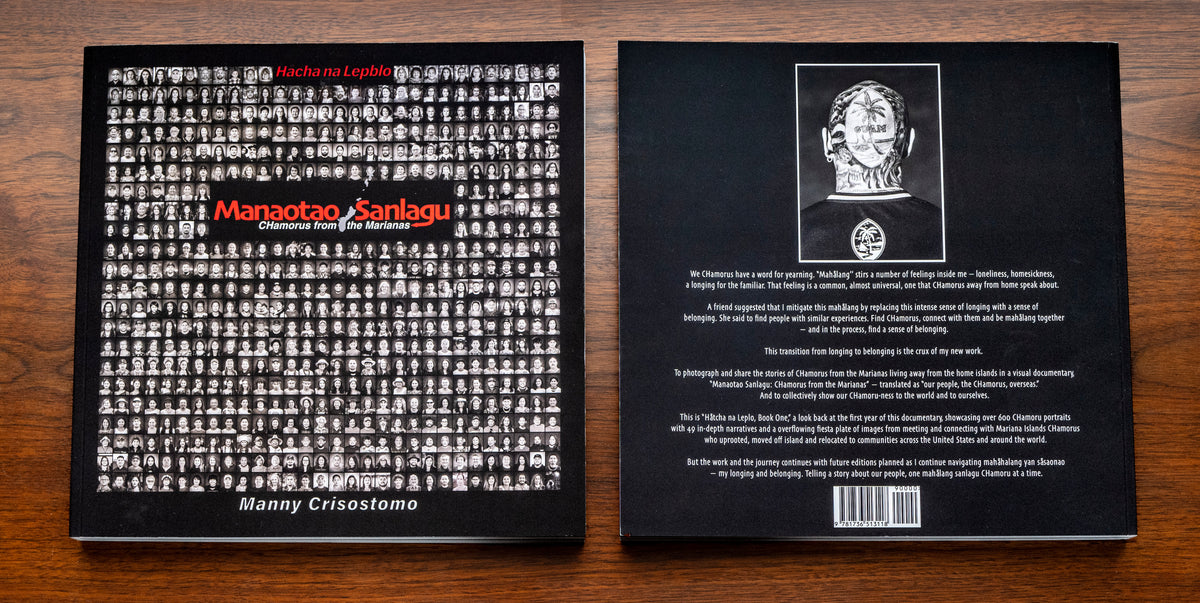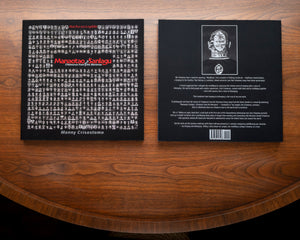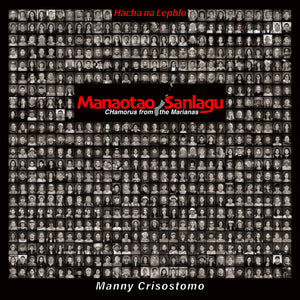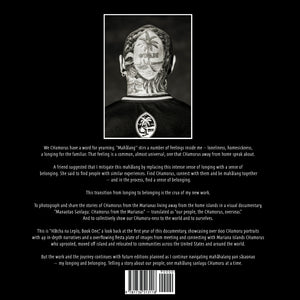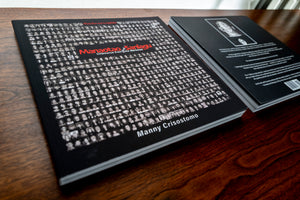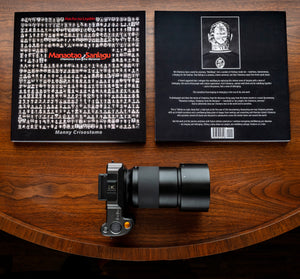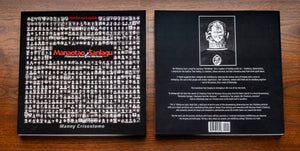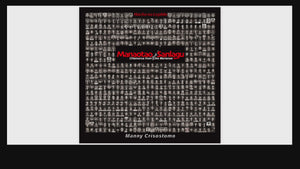CHamoru artist & Pulitzer Prize-winning photojournalist Manny Crisostomo
Guam’s first and only Pulitzer Prize winner, Manny Crisostomo, is a tireless advocate and chronicler of indigenous people and cultures of the Pacific, including CHamorus living in the Marianas and in the diaspora.
His unique Foto Fashion collection is curated from his intensive catalog of images and designs of Oceania and indigenous people of the Pacific. Limited edition prints are from four decades shooting around the world.
Journeys To The Heart: Pacific Islanders Celebrate Their Indigenous Culture
$100.00 USD $120.00 USD You save: 16% ( $20.00 USD )
“Hasso: WWII CHamoru Survivors & Liberators,”is a 8.5 by 11, 134-page book
So We Leapt - Para I Hinanao-ta Mo’na: Guam after Liberation & CHamoru WWII Survivors
$50.00 USD
"So We Leapt - Para I Hinanao-ta Mo’na: Guam after Liberation & CHamoru WWII Survivors," showcases stunning photos of postwar Guam by Army photographer Frank Buchman. Many of the images have never been seen before and reflect a deep artistic connection to the CHamoru people of the time.
The book also features more than 200 contemporary portraits of WWll liberators and survivors who signed Guam flags taken around the country by California Superior Court Judge Johnny Cepeda Gogo, formerly of Sinajana.
The 170-page, 9" by 12" book also includes a narrative by award-winning investigative reporter Rob Perez & CHamoru WWll survivor portraits by Pulitzer Prize-winning photojournalist Manny Crisostomo.
Crisostomo also meticulously digitally restored and curated the Buchman collection of over 500 prints, negatives, and color transparencies taken on Guam from 1944-1946.
Hasso: WWII CHamoru Survivors & Liberators
$40.00 USD
California Superior Court Judge Johnny Cepeda Gogo, formerly of Sinajana, new book, “Hasso: WWII CHamoru Survivors & Liberators,” was launched on Guam in July in time to celebrate the 80th anniversary of Guam’s liberation from Japanese occupiers in World War II.
“Hasso” chronicles Gogo’s passion project honoring the CHamoru survivors of the war and U.S. military personnel who liberated Guam. In 2020, he began traveling the country with an old cloth Guam flag to have survivors — including three former governors of Guam — and liberators sign it. More than 100 — nearly a dozen liberators and more than 90 survivors — have added their signatures.
The 134-page book includes features by former Guam congressman Dr. Robert Underwood and an introduction by award-winning investigative reporter Rob Perez, formerly of Santa Rita.
“I try not to dwell on the stories that bring back those hardships and those memories and instead try to focus on celebrating them as survivors and heroes,” Gogo, who was recently nominated by President Joe Biden to be U.S. attorney for Guam and the Northern Mariana Islands, said in the book. “I try to recognize them and honor them, continuing to share their stories and ultimately bringing this flag back home to Guam.”
In addition to Gogo’s photos of the signings, “Hasso” features photos by Pulitzer Prize-winning photojournalist Manny Crisostomo that were originally published as part of his own passion project, the “Sanlagu'' series of CHamorus living away from the Marianas. Crisostomo published and designed “Hasso” under his San Francisco Bay Area-based imprint, Sanlagu Publications.
“Håcha na Lepblo, (Book One) Manaotao Sanlagu: CHamorus from the Marianas”
Sold Out
About the book
SOLD OUT. “Håcha na Lepblo, (Book One) Manaotao Sanlagu: CHamorus from the Marianas” is a 12-inch-square approximately 220-page book showcasing the nearly 600 CHamoru portraits that Pulitzer Prize-winning photographer Manny Crisostomo photographed this past year. The book will also feature the 44 CHamorus and their in-depth narratives of living sanlagu that was published on Guam PDN. Their voices spoke of life journeys, accomplishment, wonderment, heartbreak, inspiration and CHamoru universal truths we all share.
Softcover
First edition of 500
12” by 12”
Opens to 24 inch spreads
Approx 250 pages
Order 10 books and we will donate a book with your name on it to a library of your choice in Guam or stateside.
Book profits and sale of merchandise at sanlagu.com go directly to support the Manaotao Sanlagu: CHamorus from the Marianas documentary travel and other expenses.
About the Manaotao Sanlagu Project
In 1991 I wrote in my book Legacy of Guam: I Kustumbren Chamoru “Oh, to be home again. We Chamorus have a word for such yearnings. ‘Mahalang’’ speaks of missing someone or something. It stirs a number of feelings inside me – loneliness, homesickness, a longing for the familiar. I see a lifetime of images of Guam compressed within the time it takes to utter the phrase, ‘Mahalang yu’.”
Three decades later I find myself again very “mahalang” but do not have any realistic way of moving back home to Guam like I did 30 years earlier. A friend of mine told me that feeling is a common, almost universal, one that Chamorus away from home speak about. She suggested that I mitigate this by replacing this intense sense of longing with a sense of belonging. She said to find people with similar experiences. Find Chamorus, connect with them and be mahalang together — and in the process, find a sense of belonging.
This transition from longing to belonging is the crux of my new work.
It’s a simple premise: To photograph and share the stories of CHamorus from the Marianas living away from the home islands in a visual documentary, “Manaotao Sanlagu: CHamorus from the Marianas” translated as “our people, the CHamorus, overseas.”
-Manny Crisostomo
